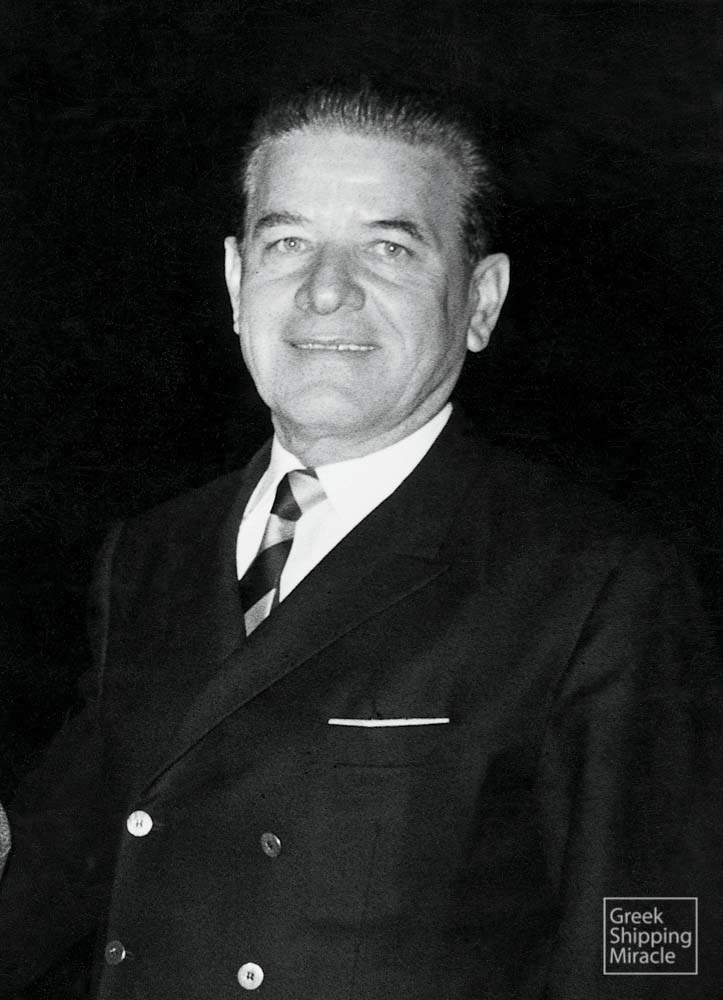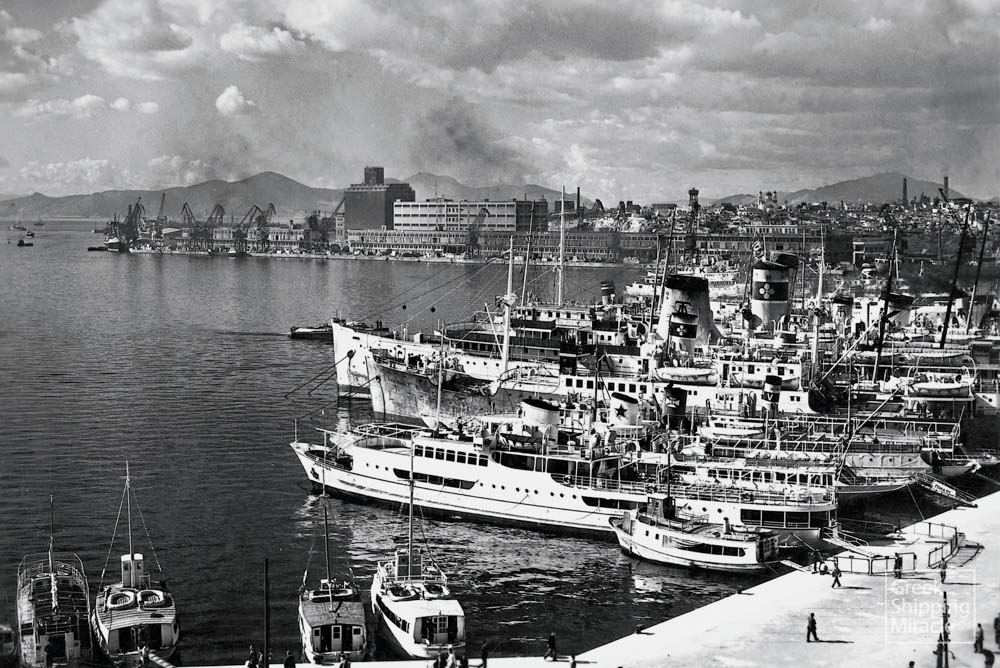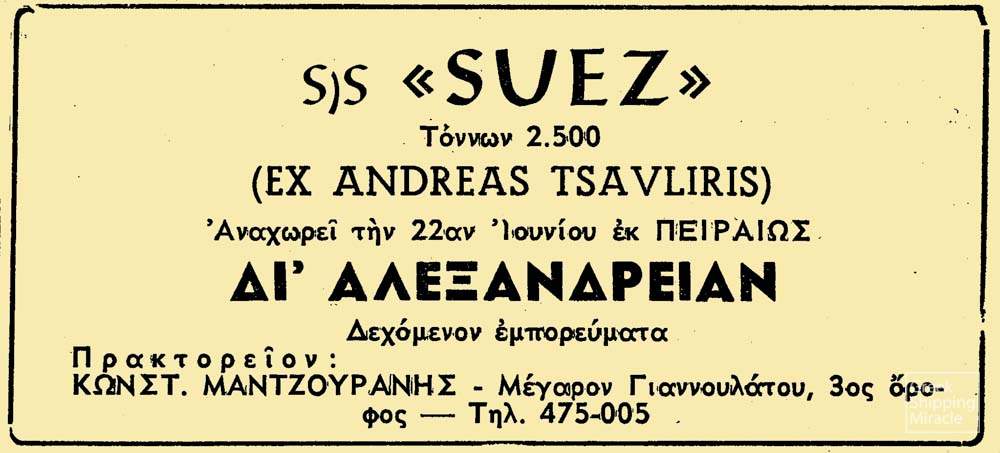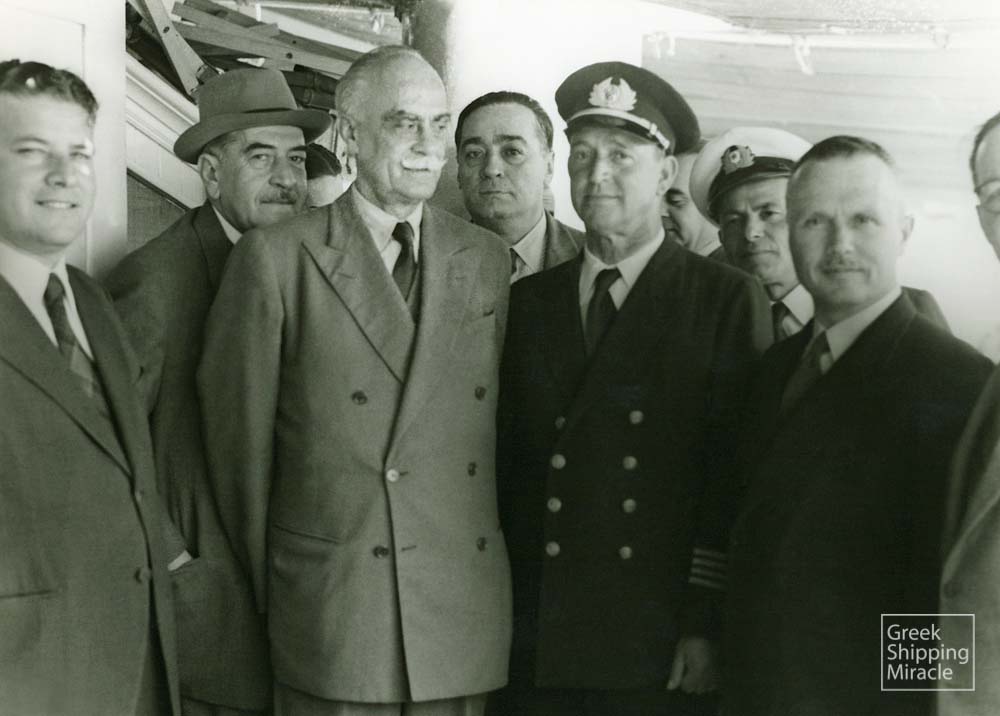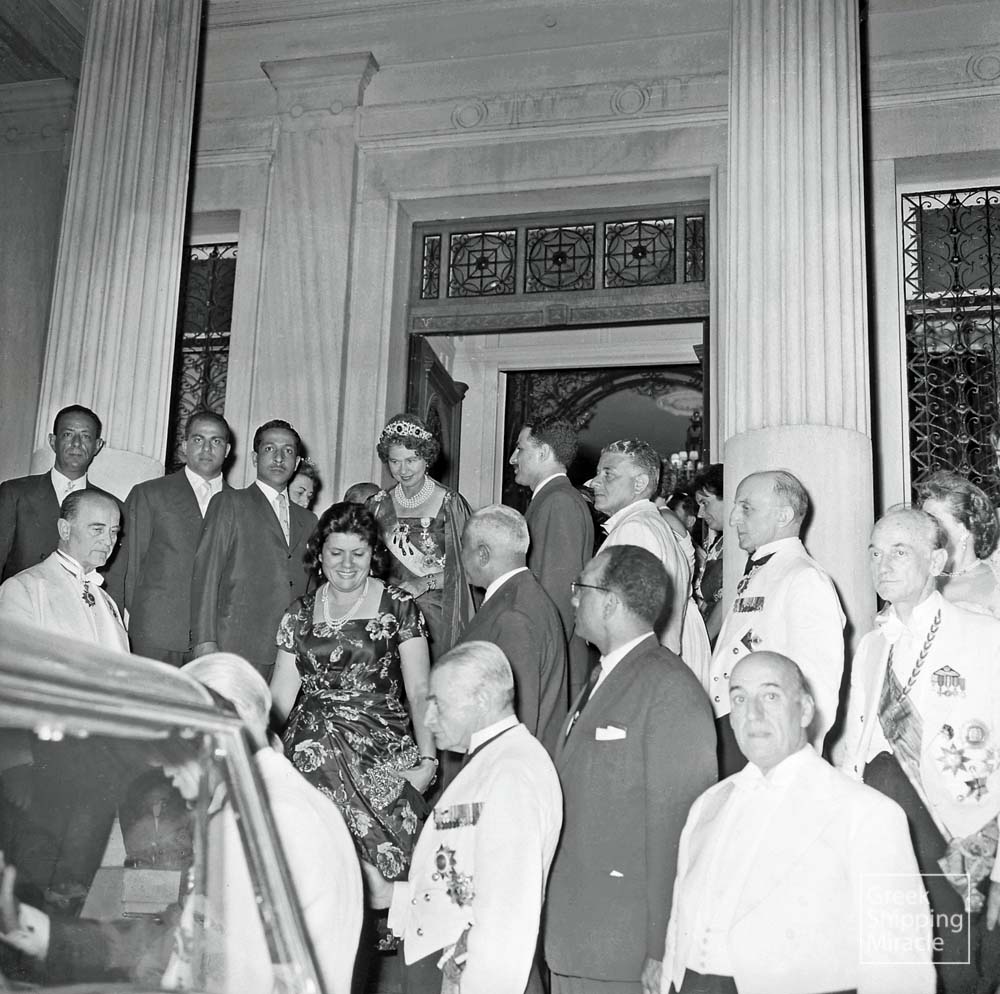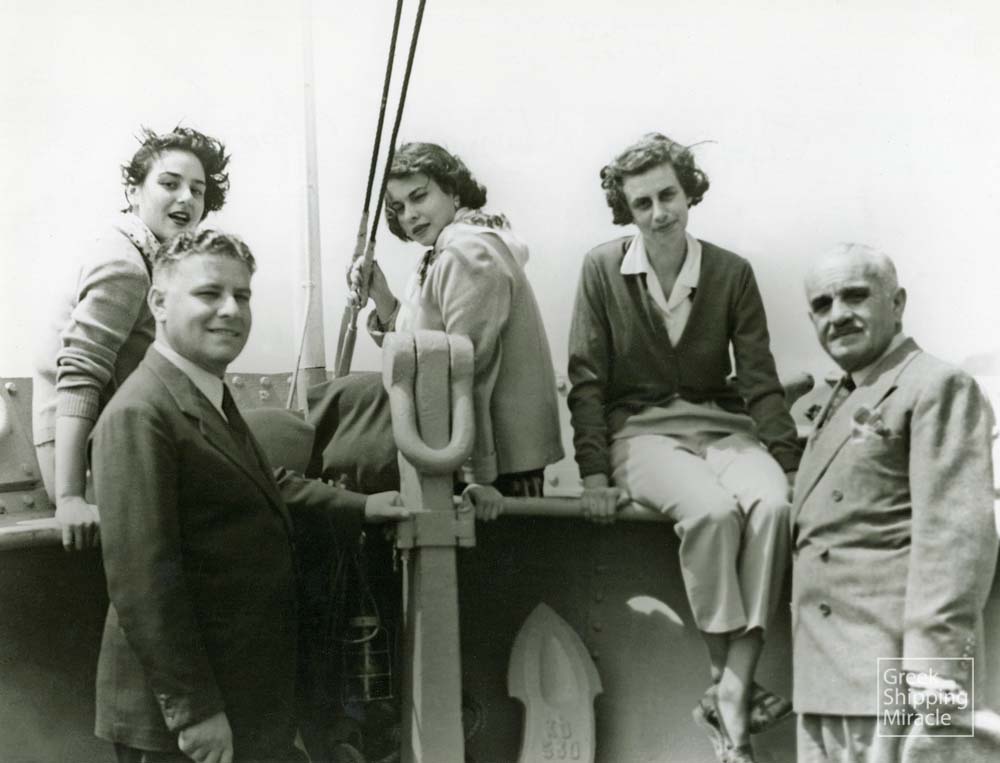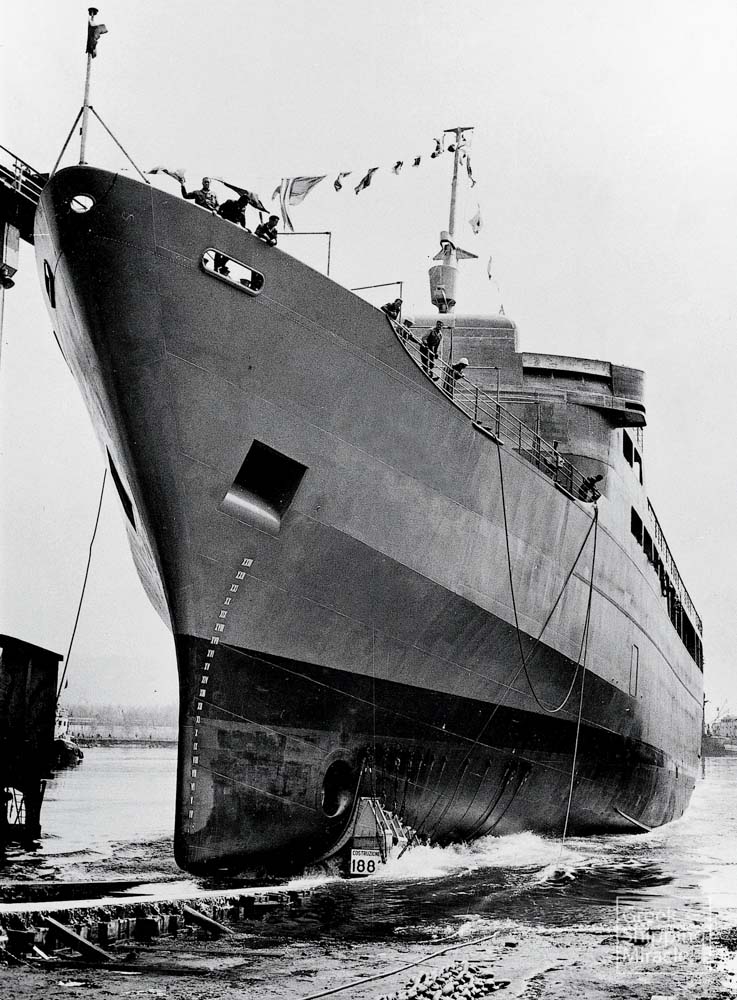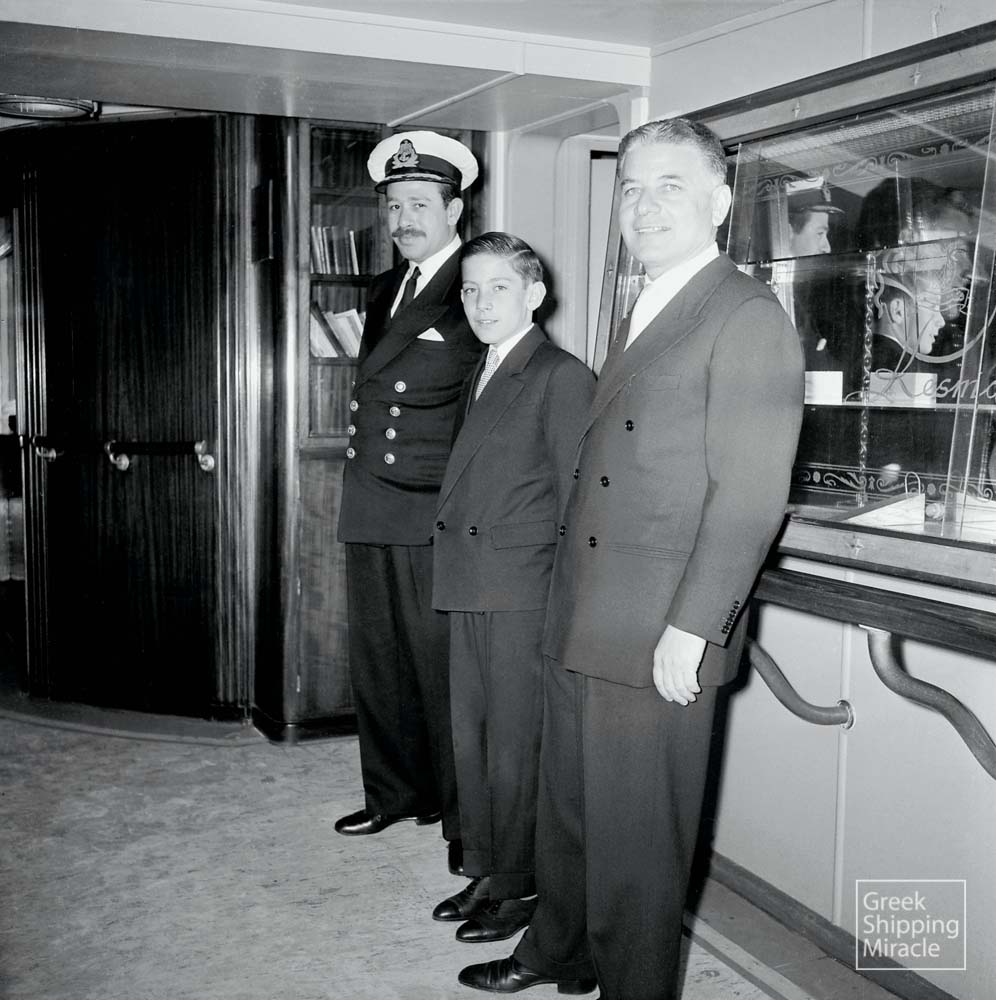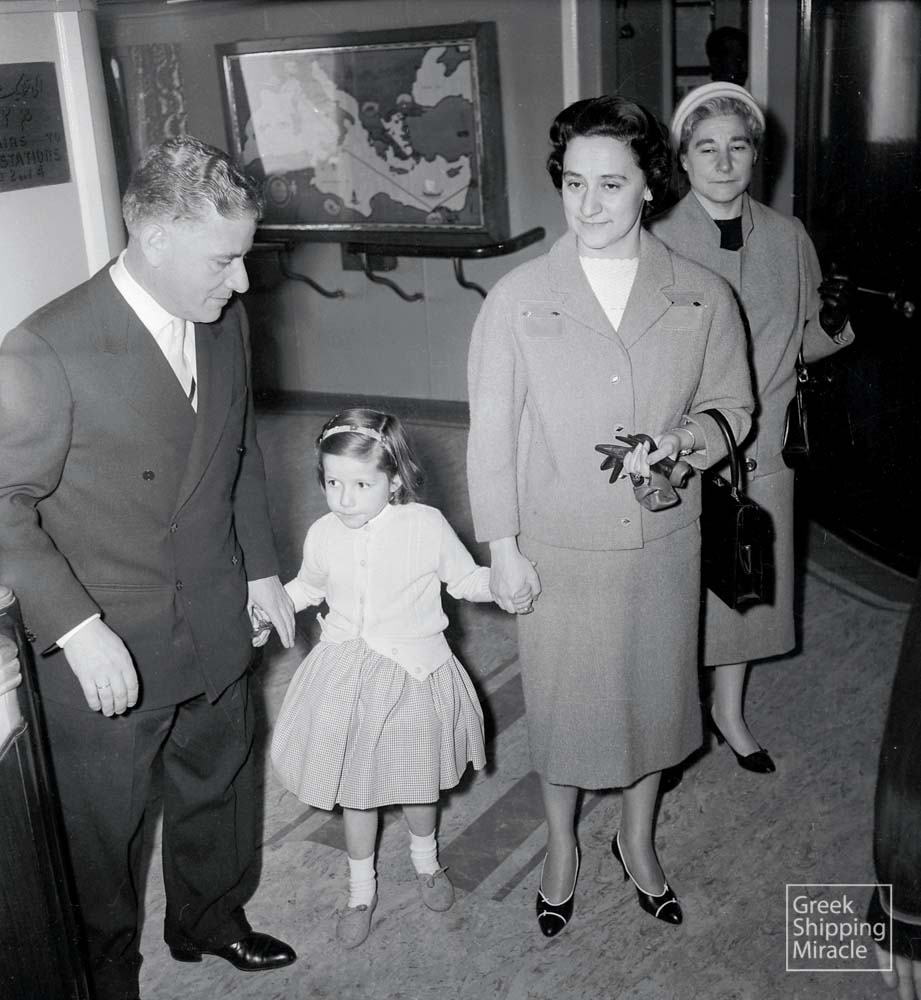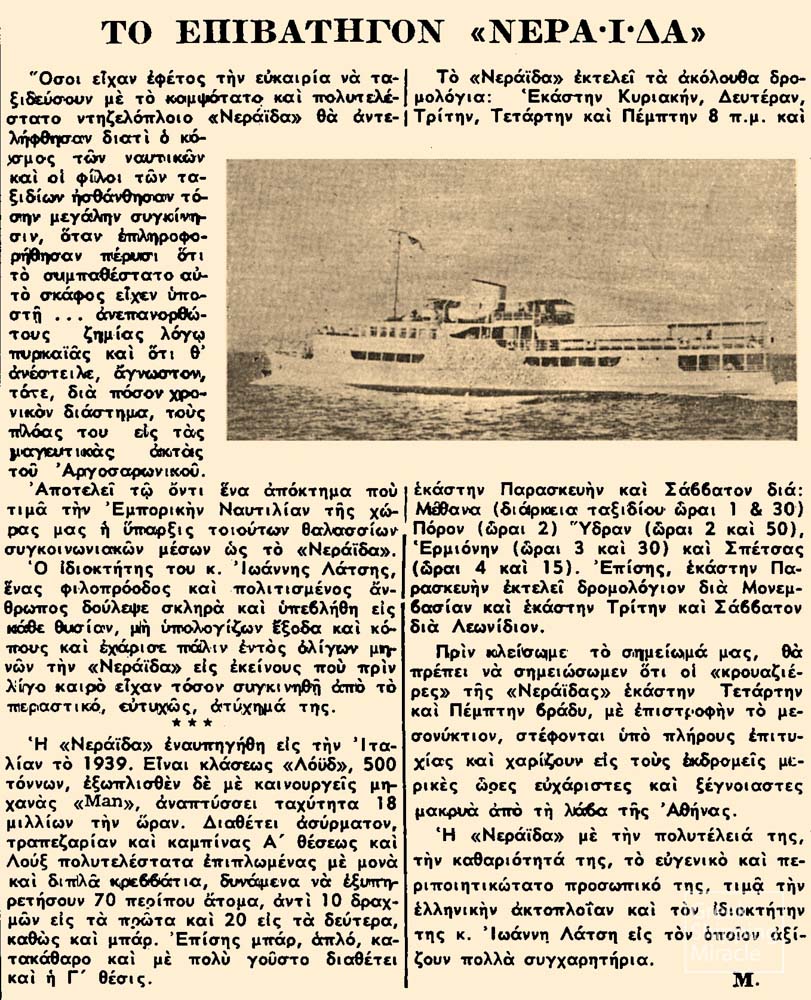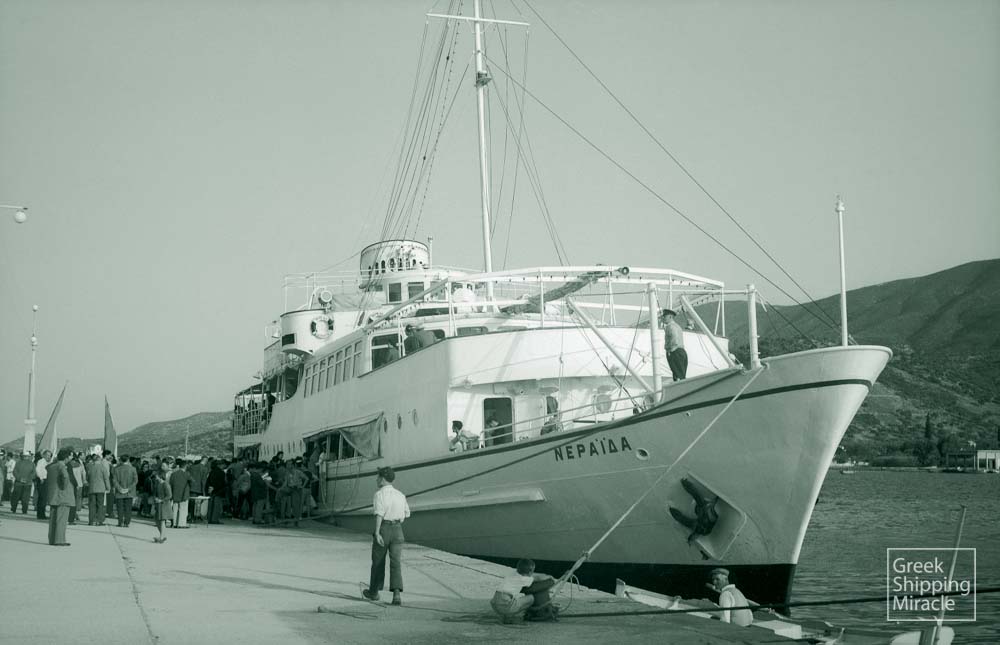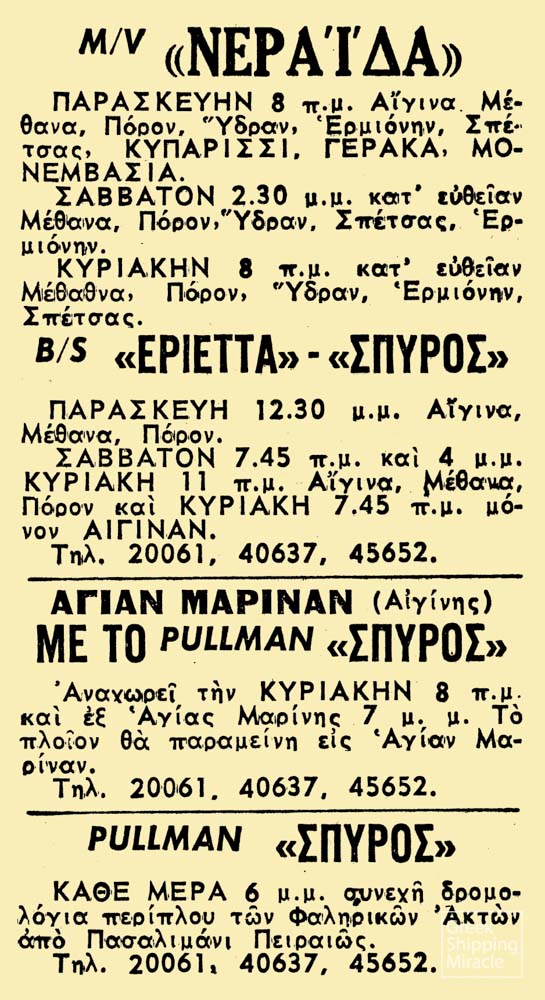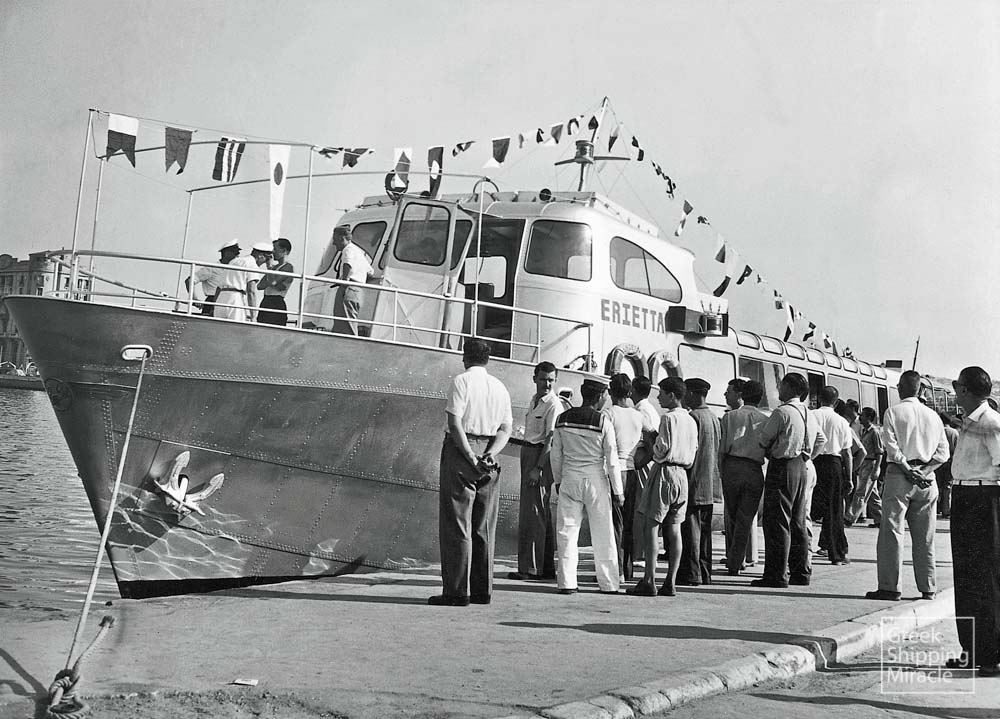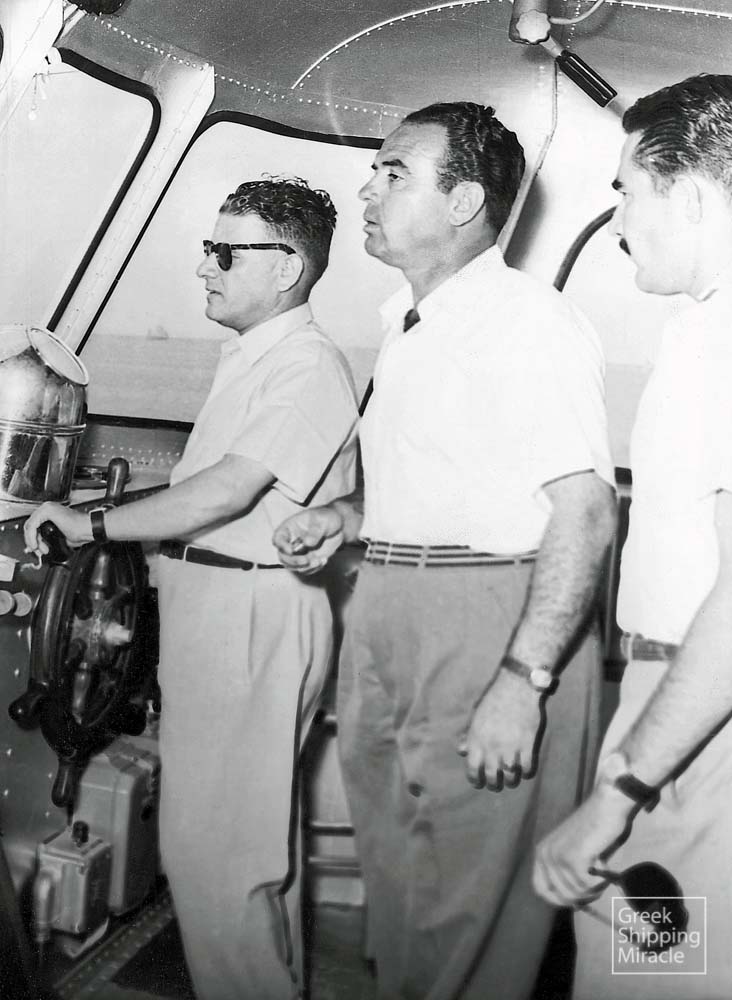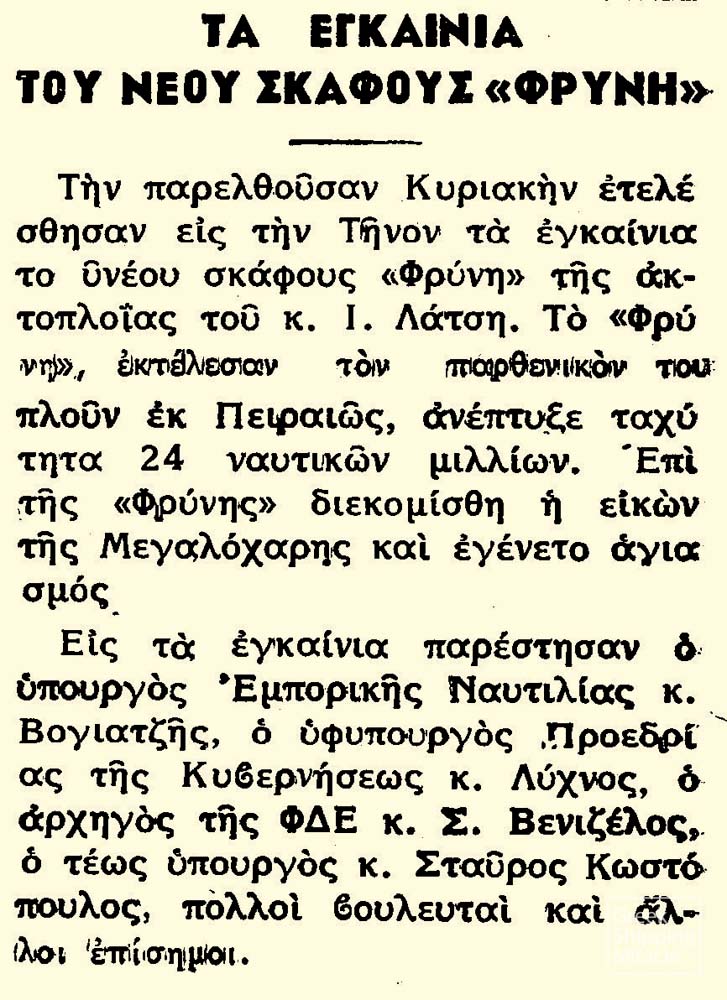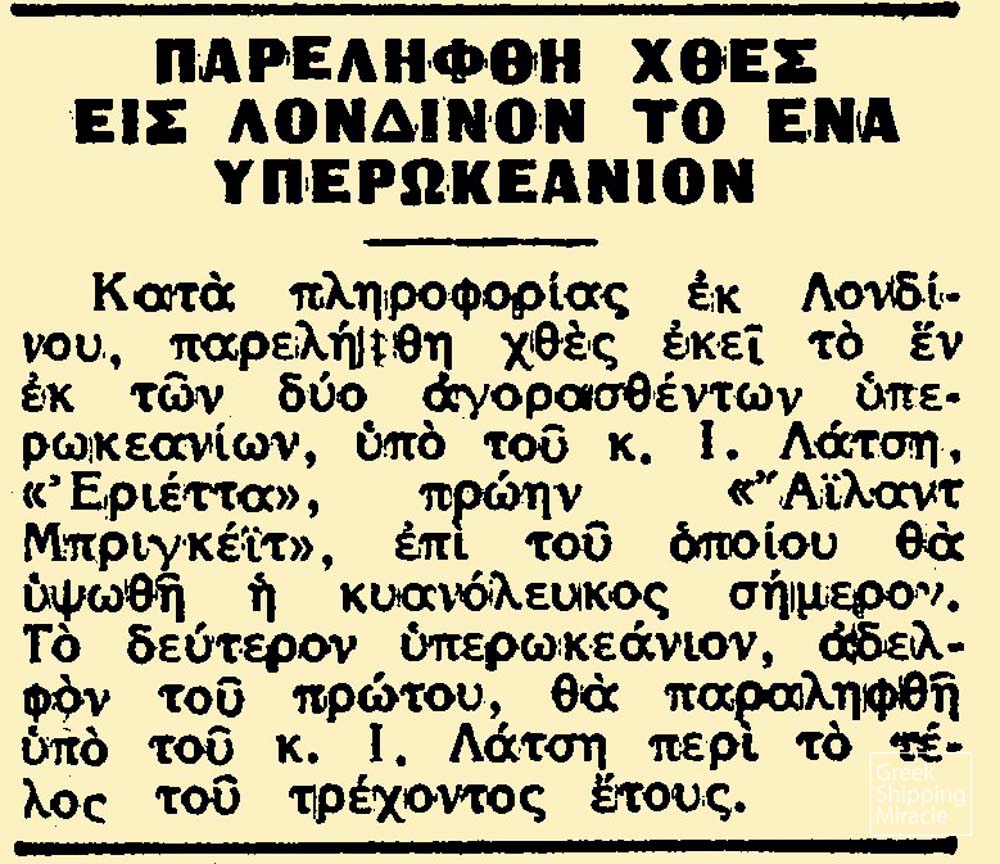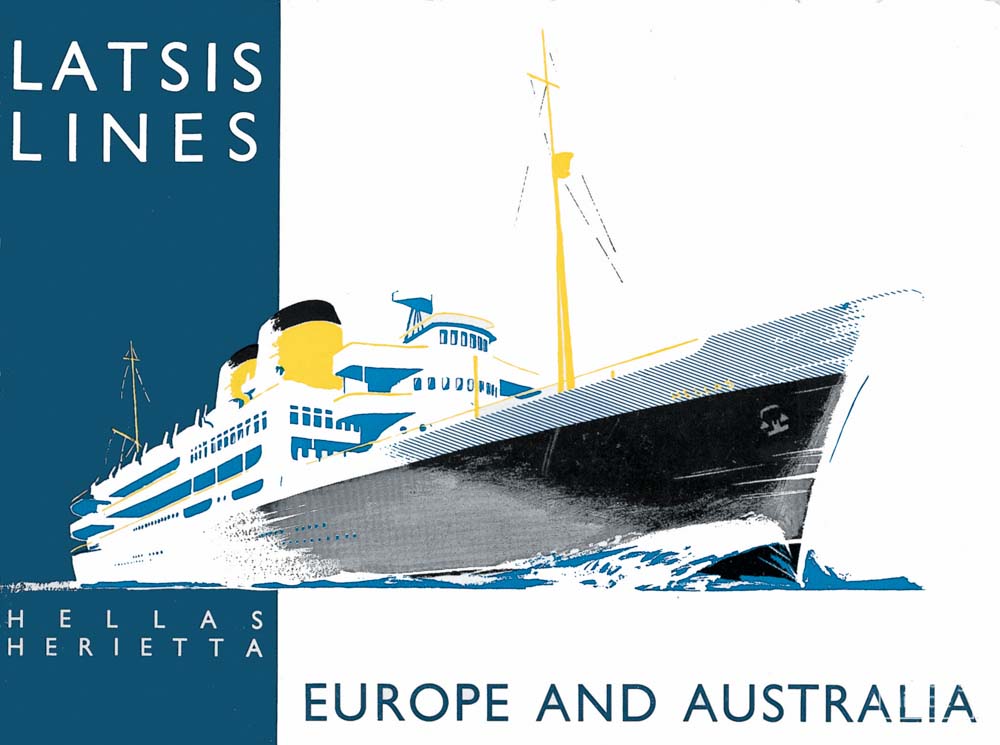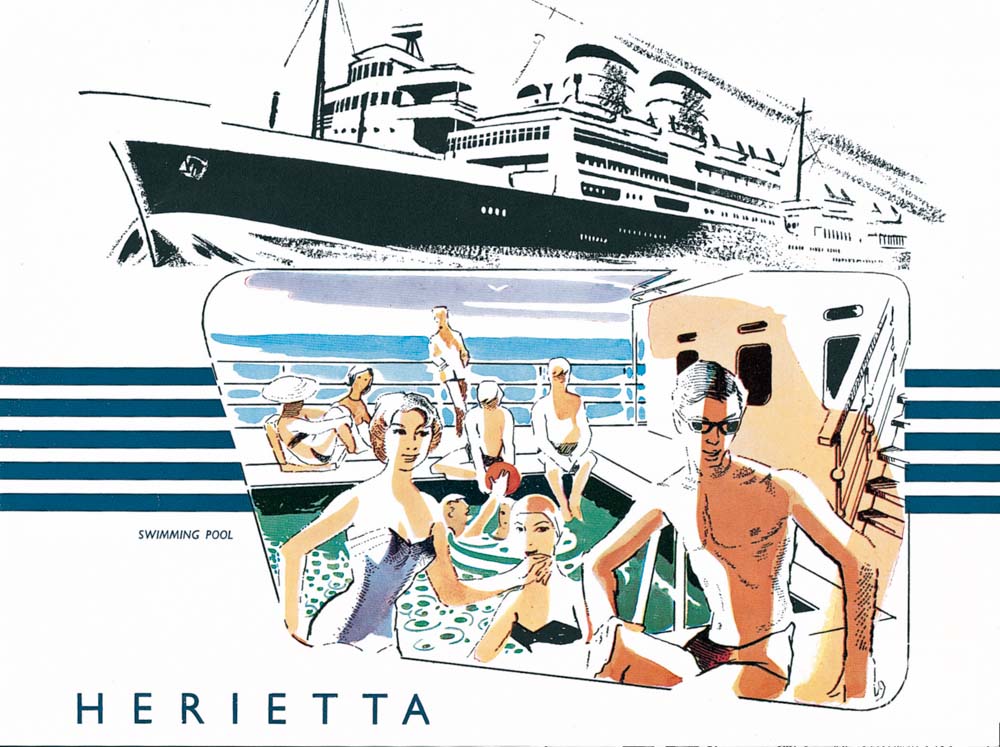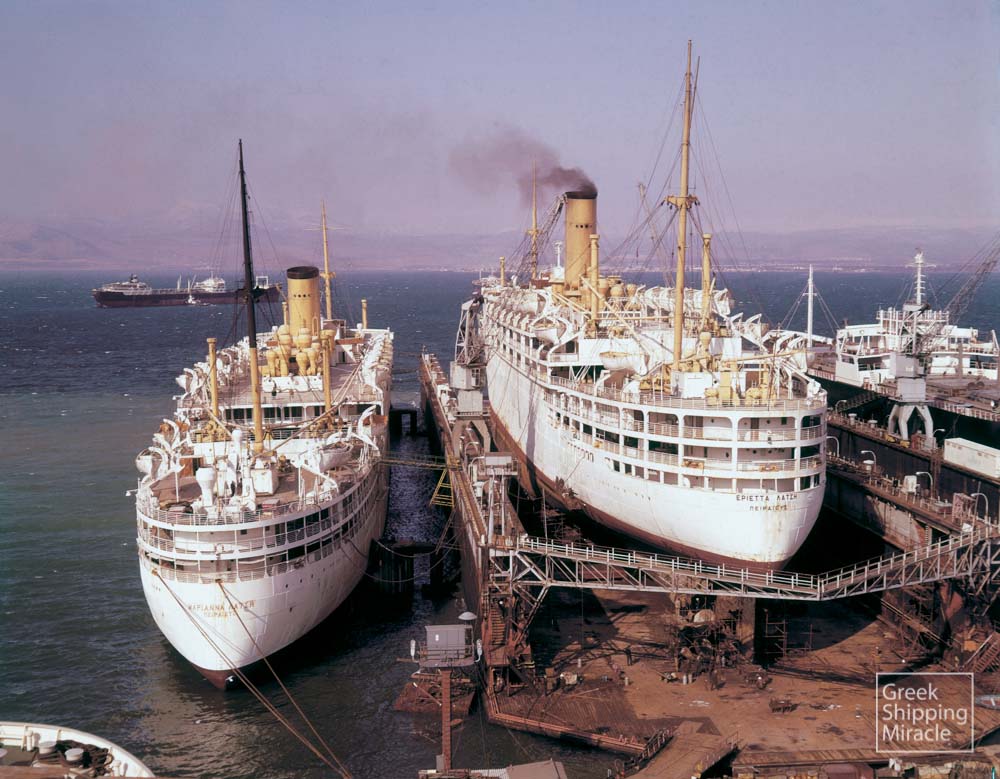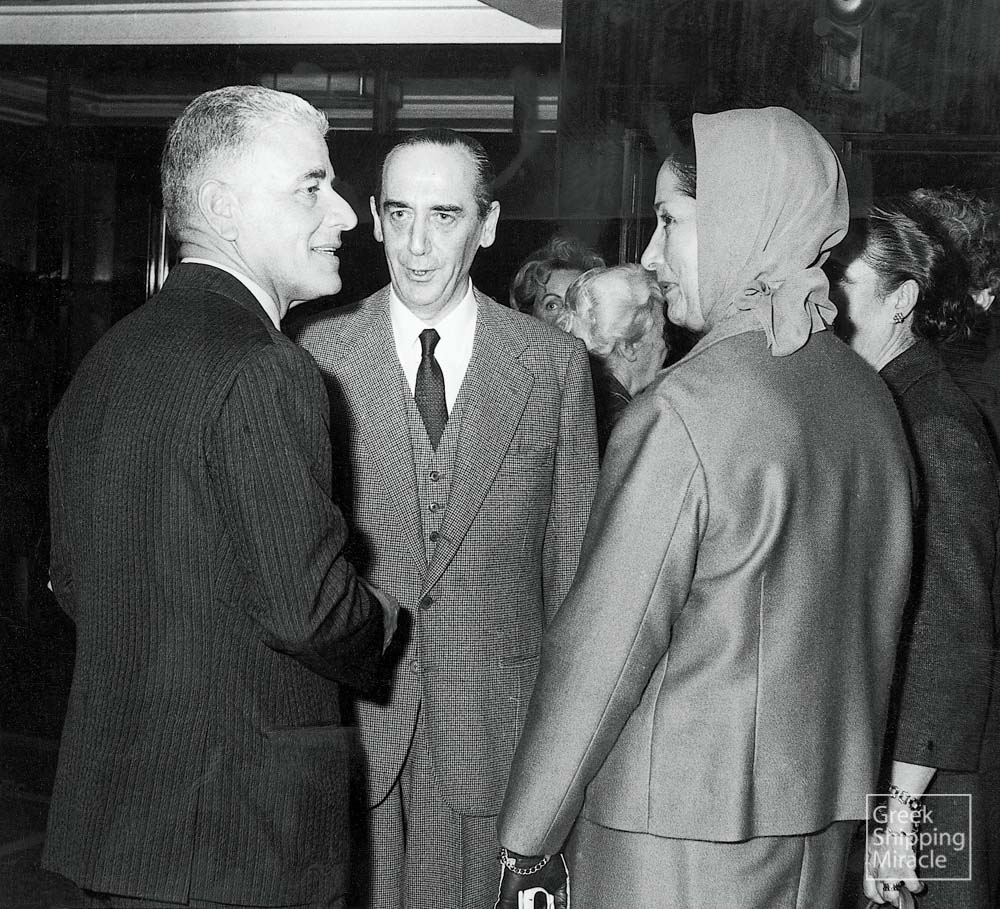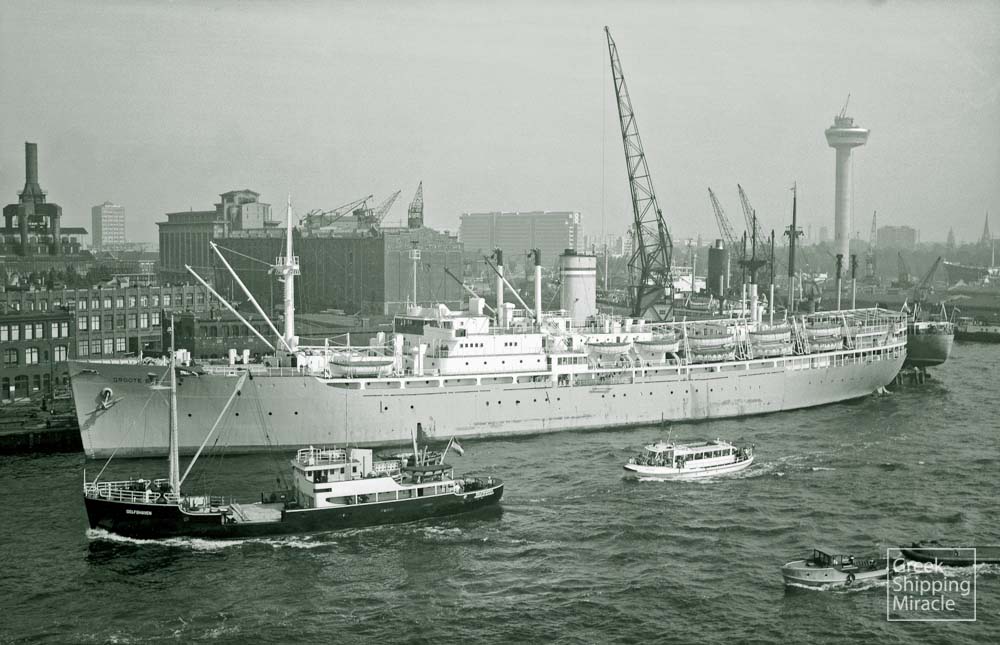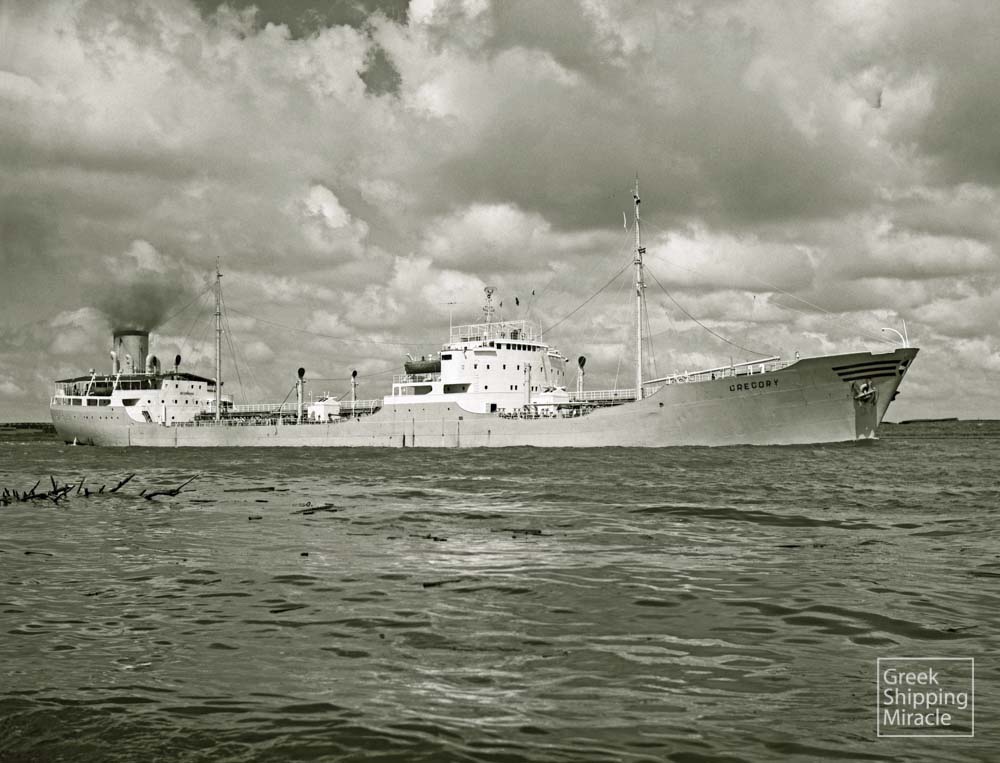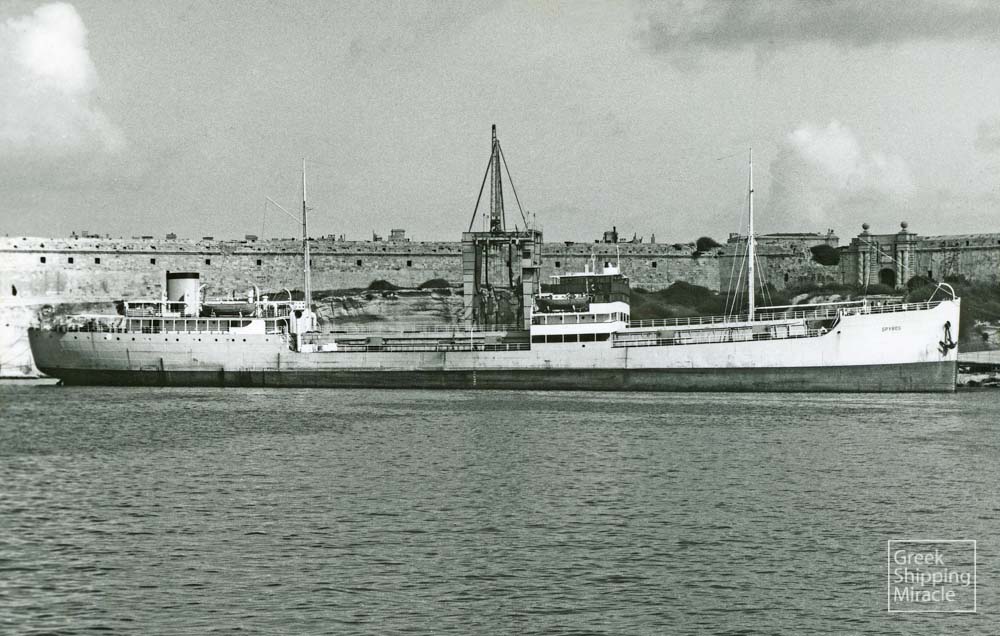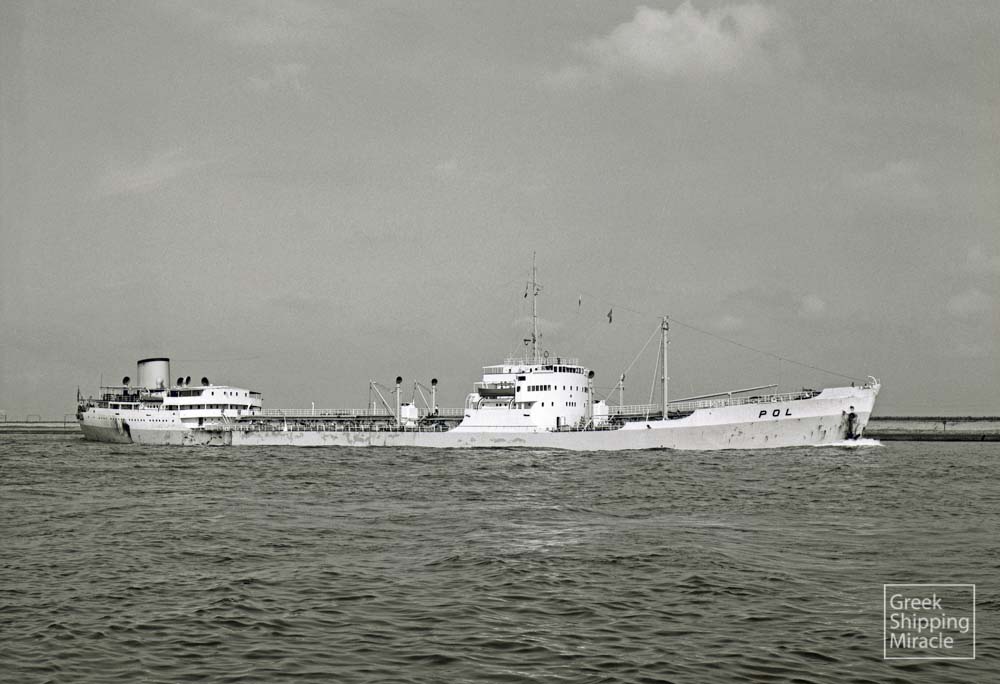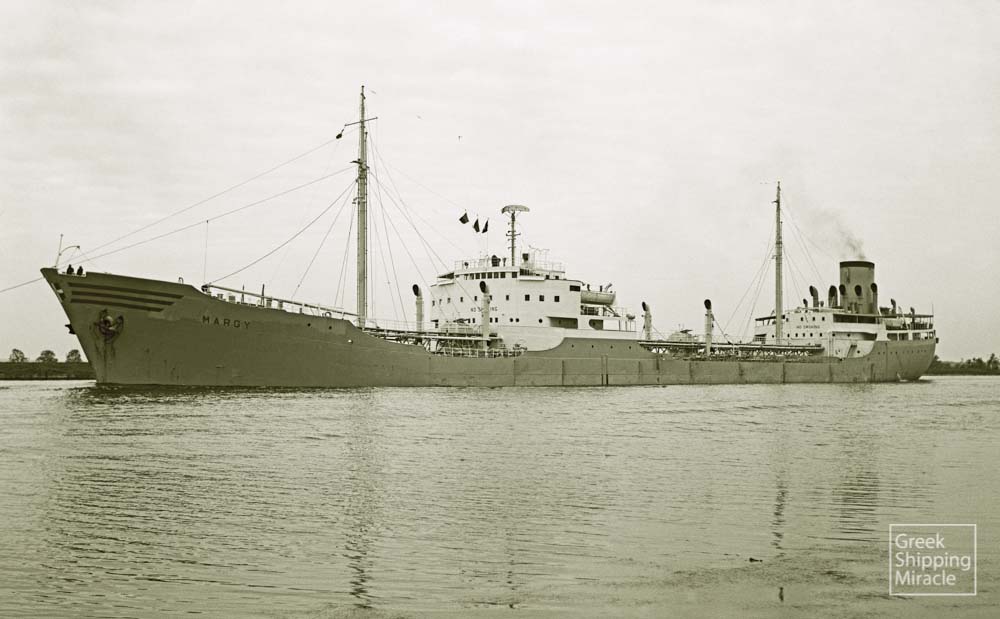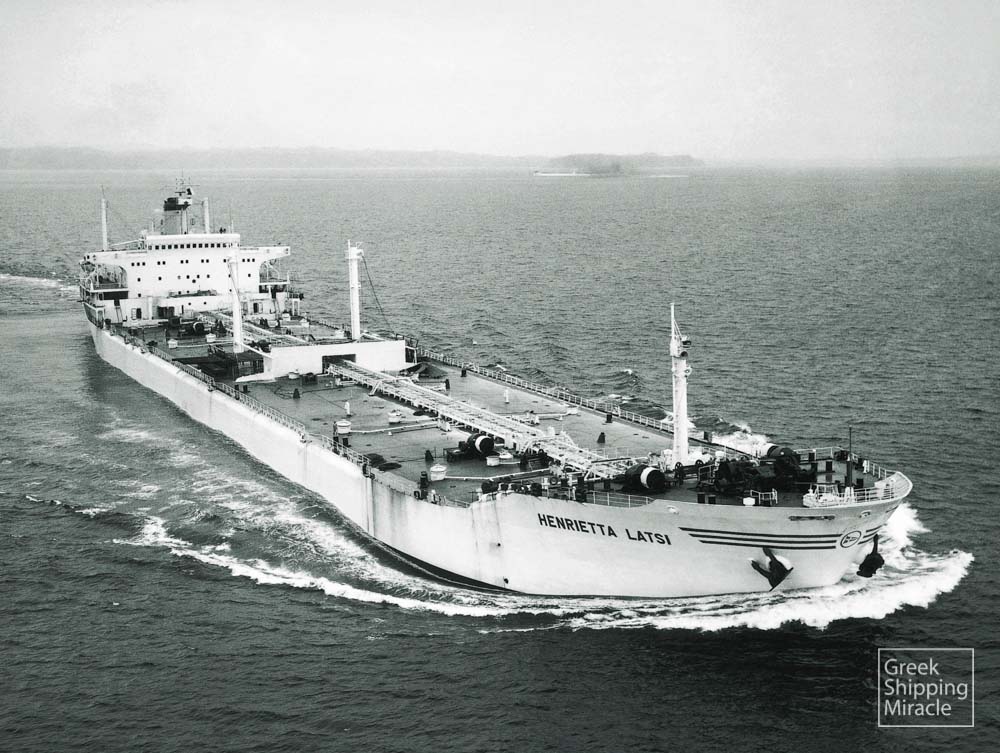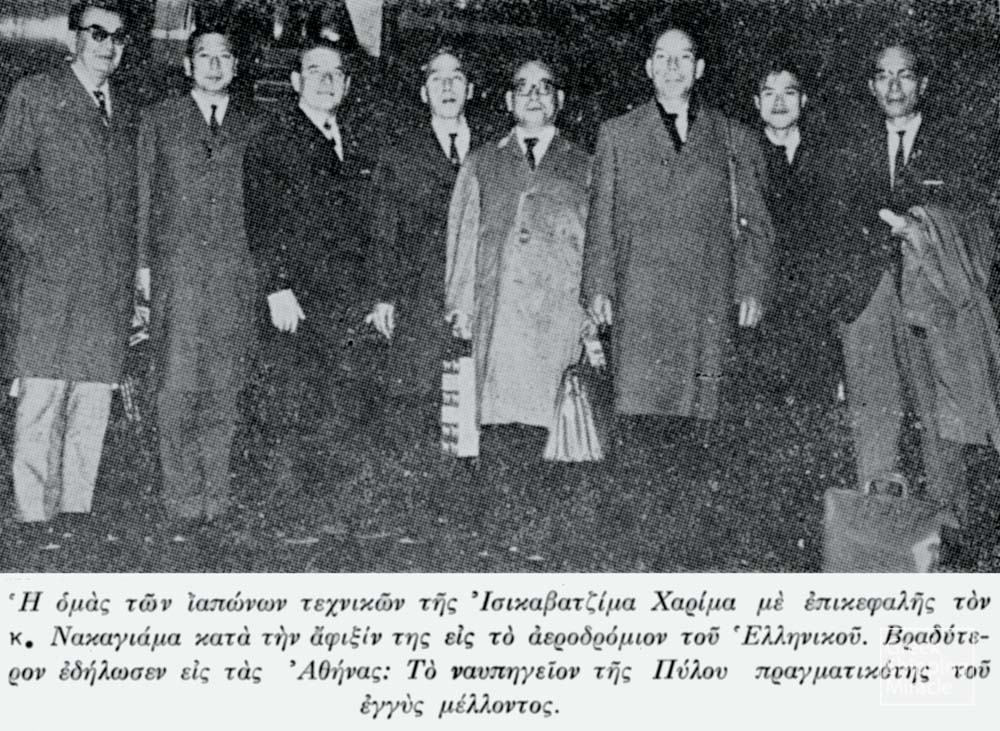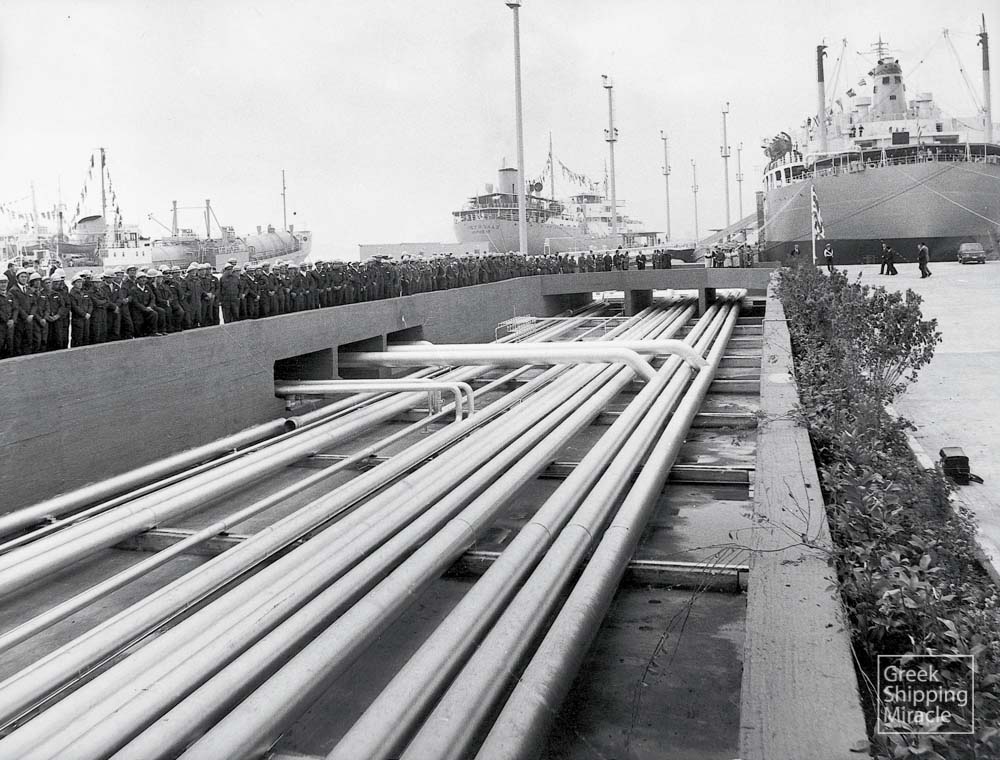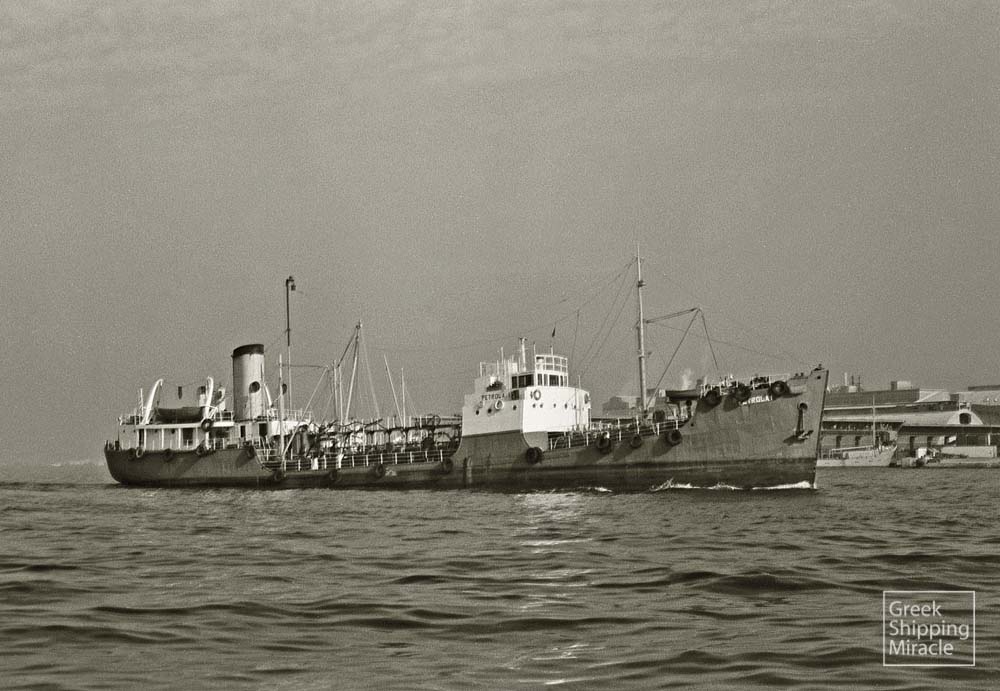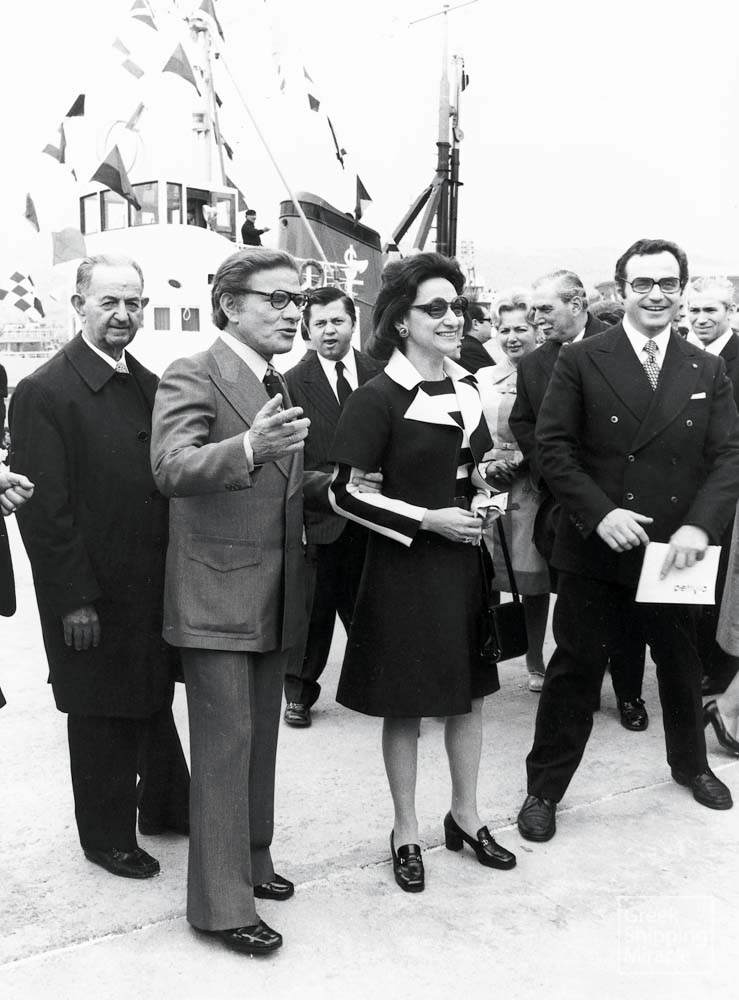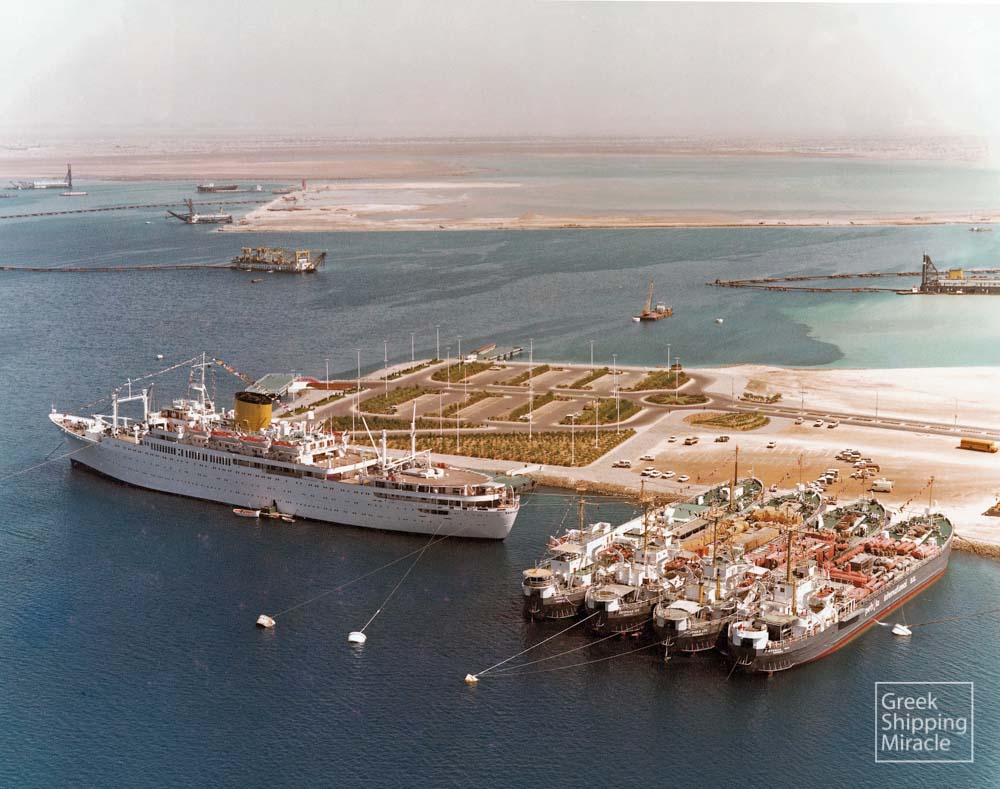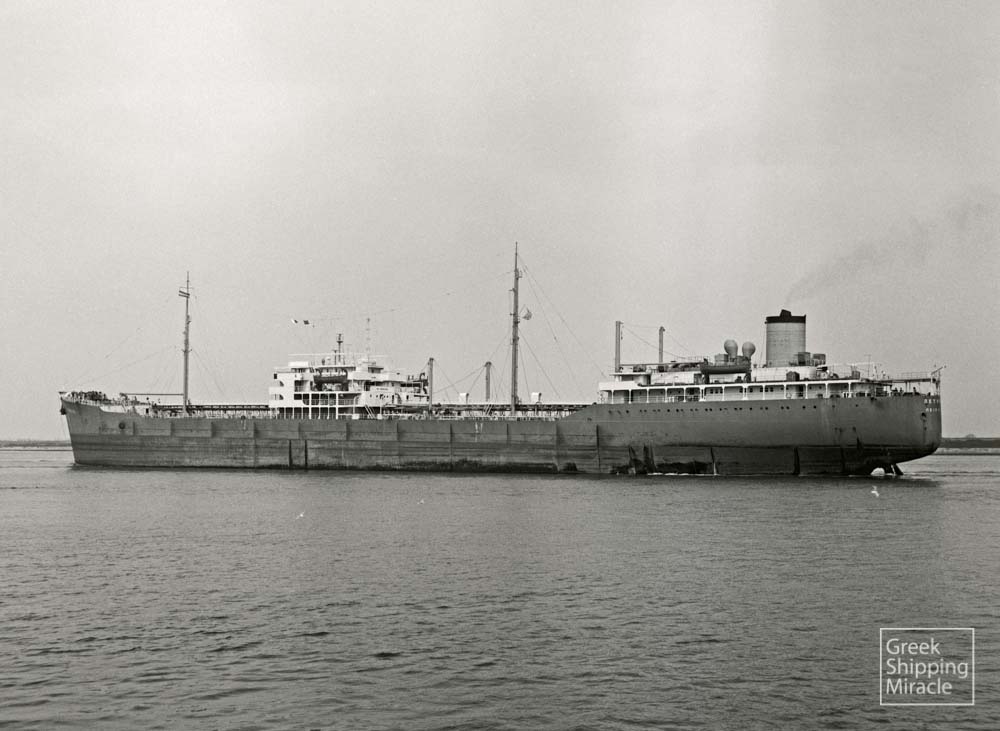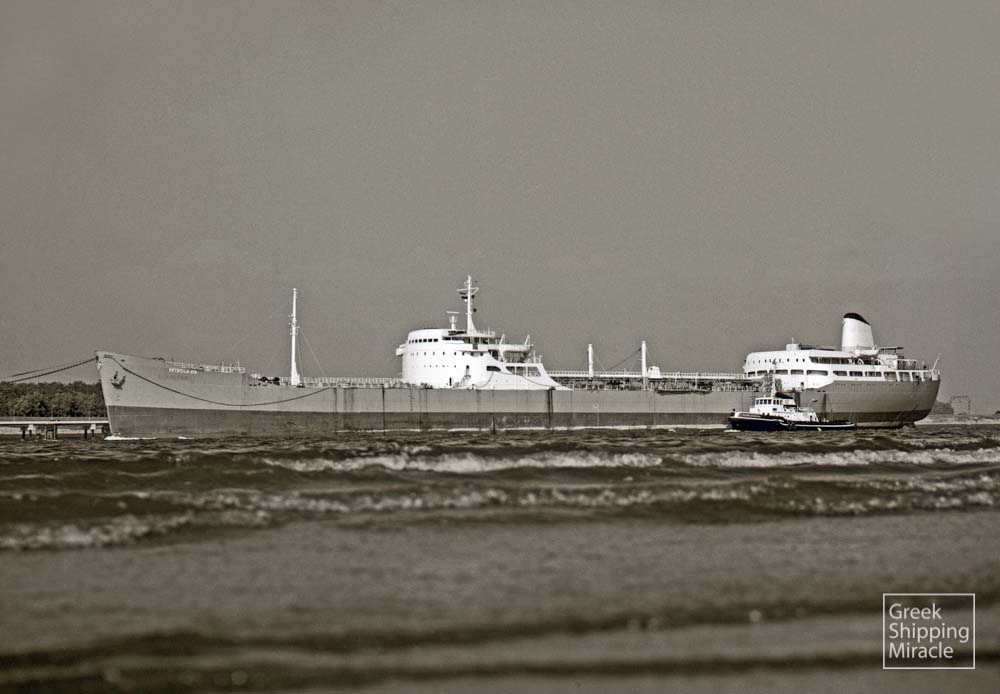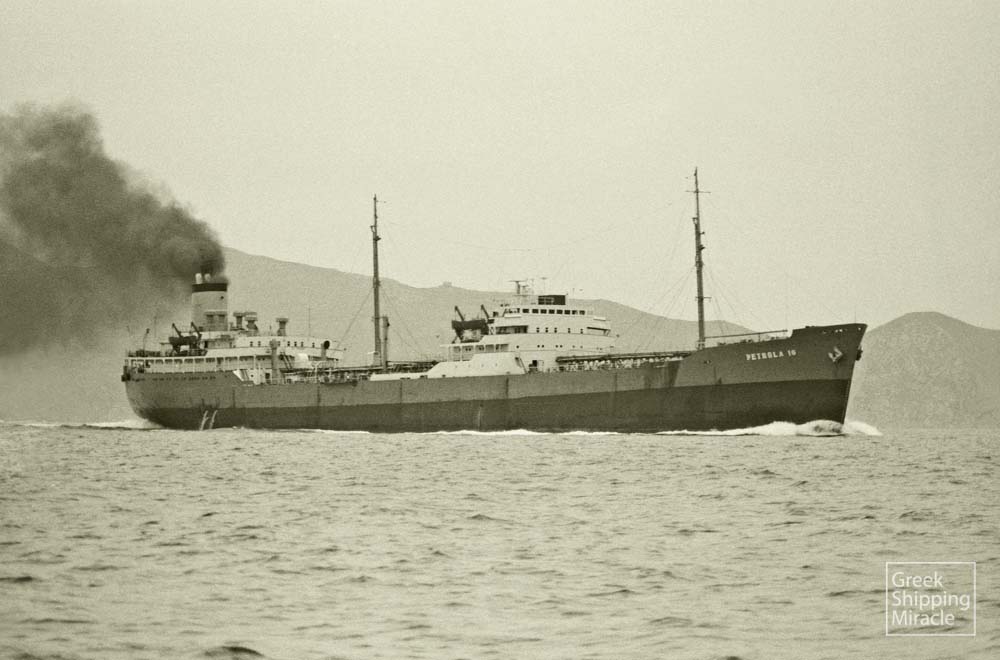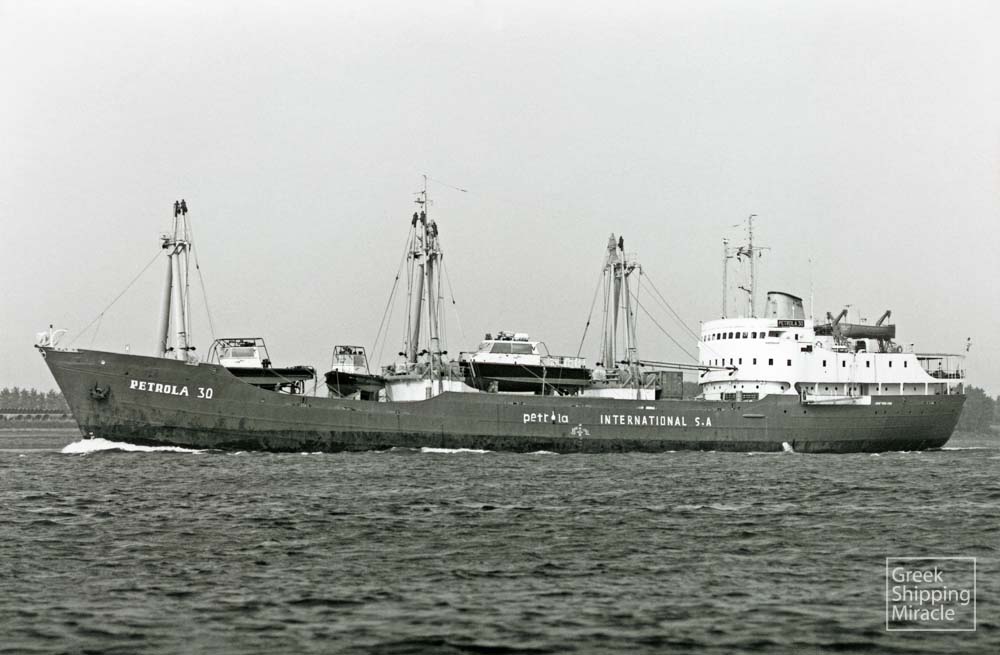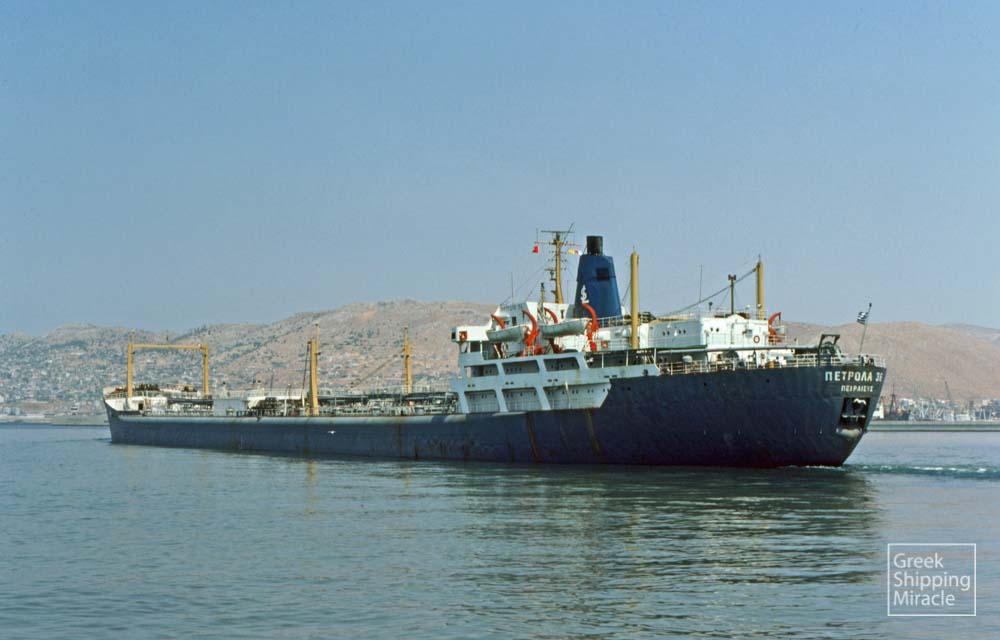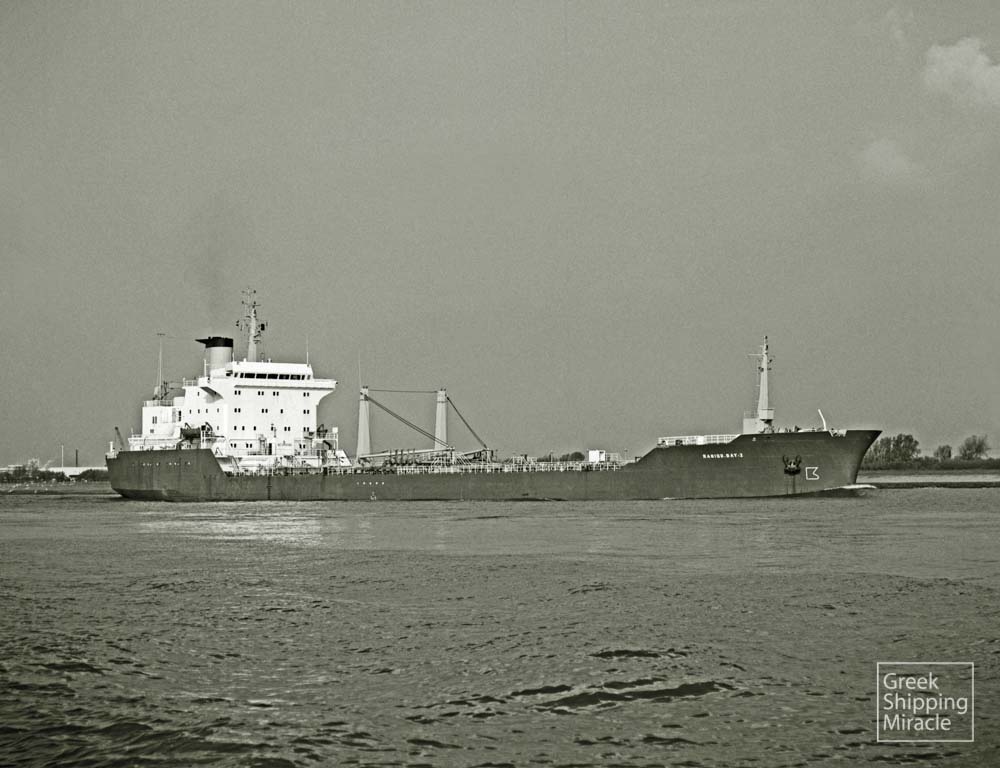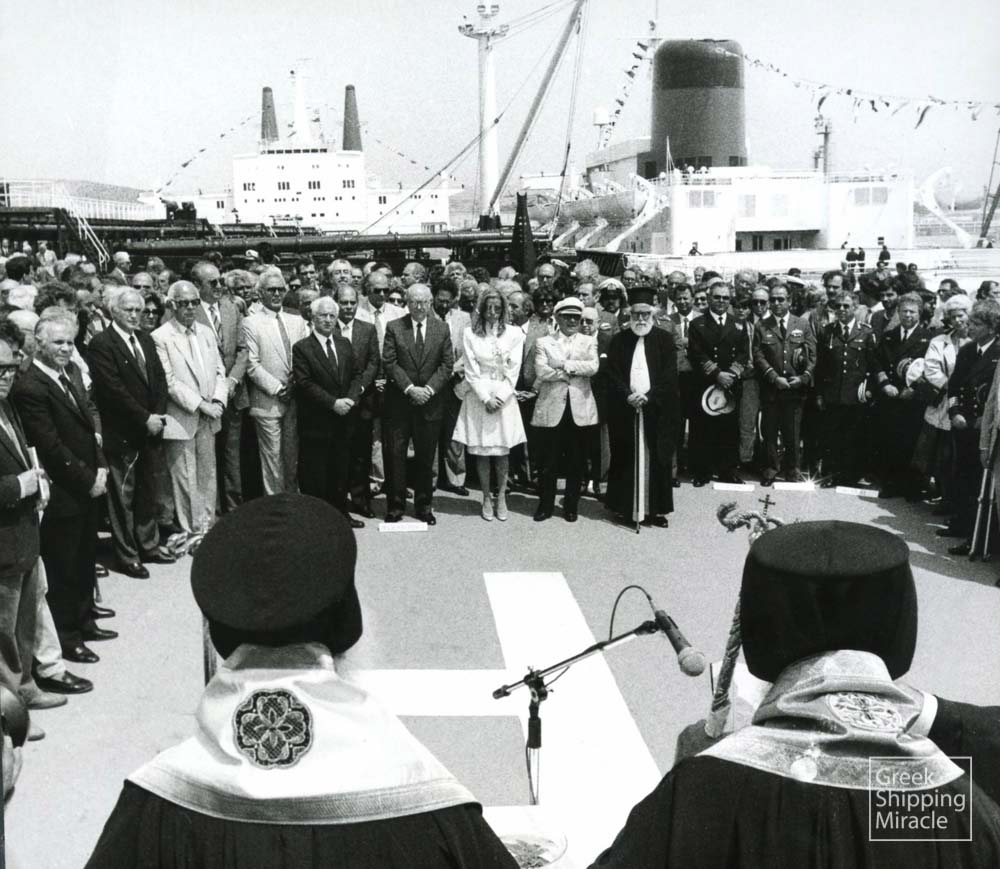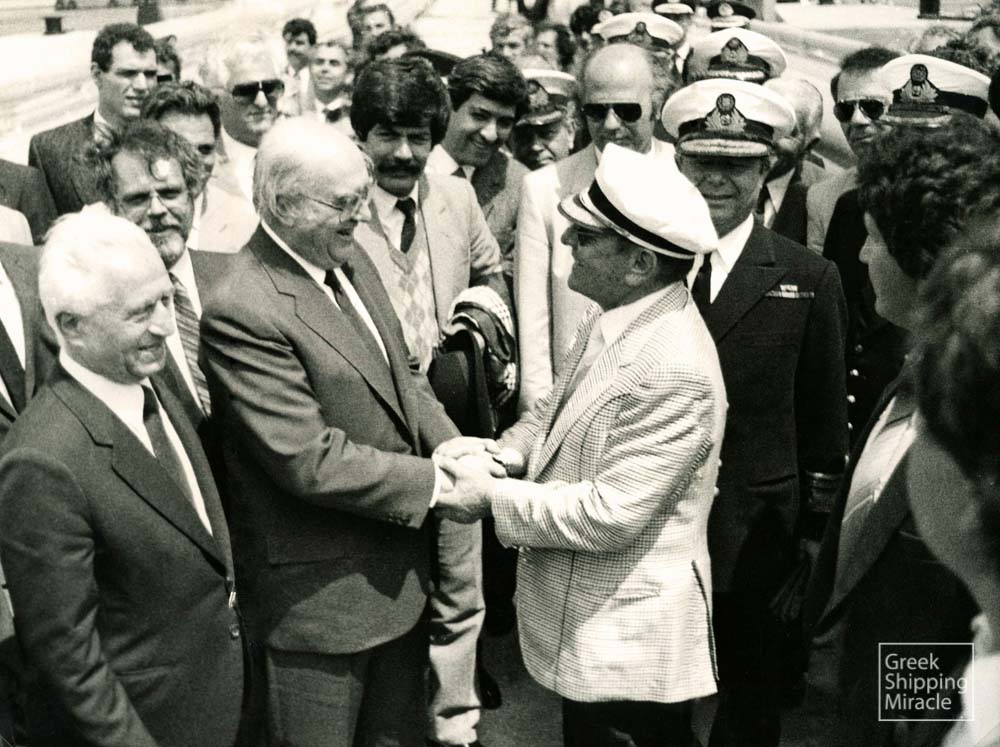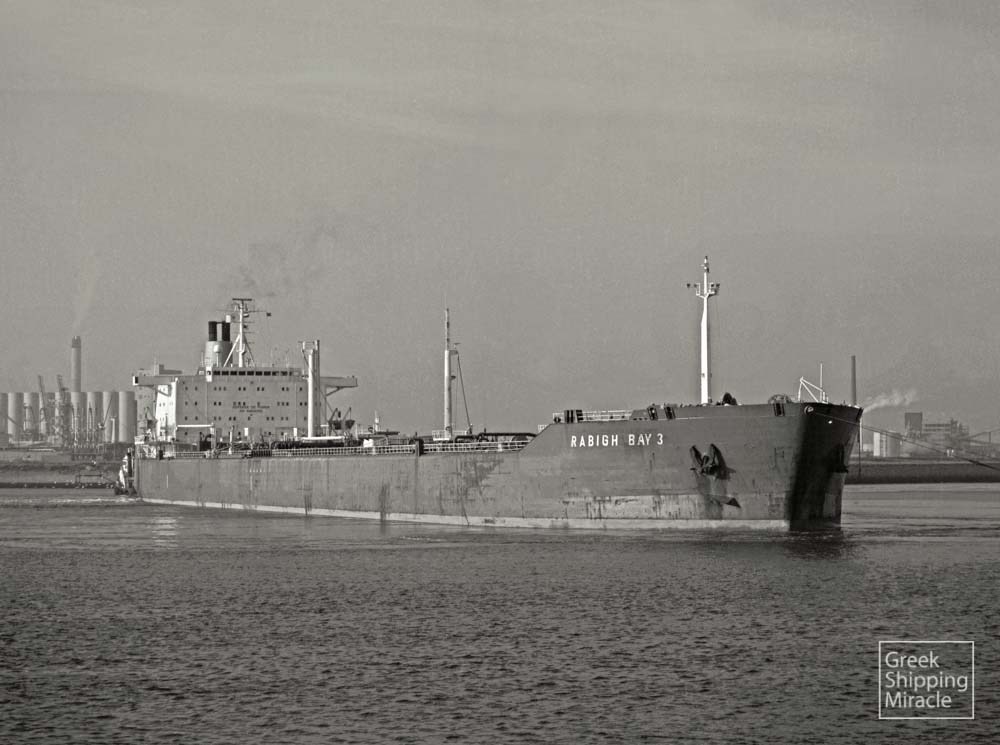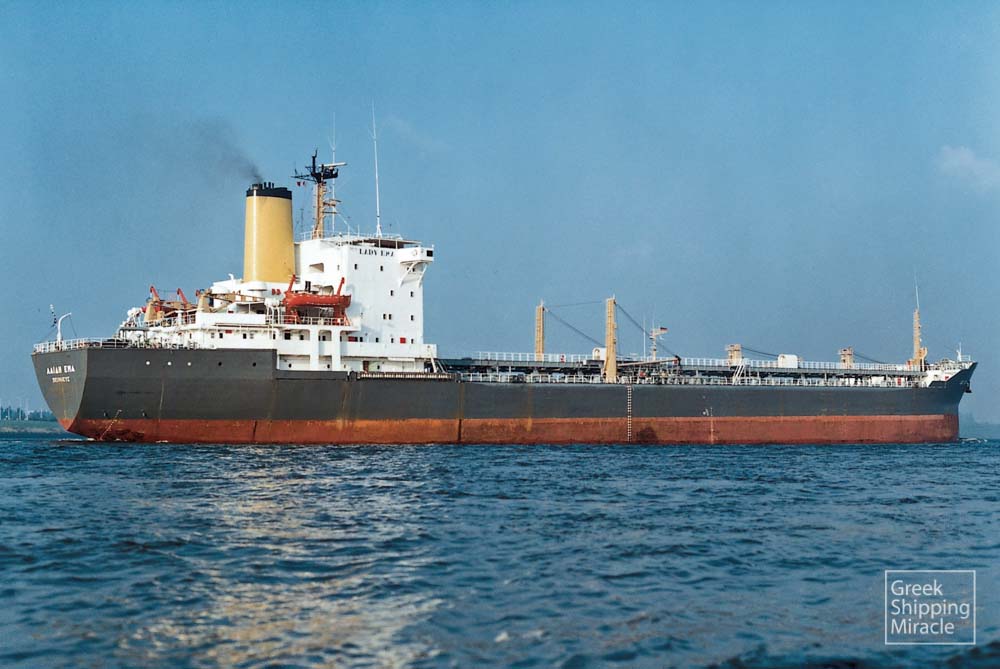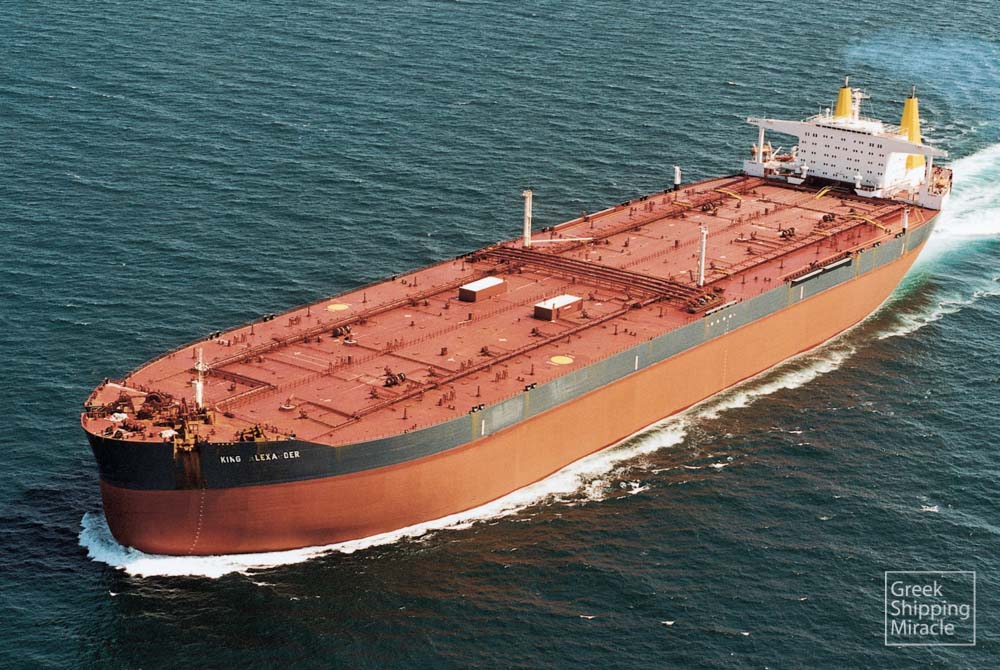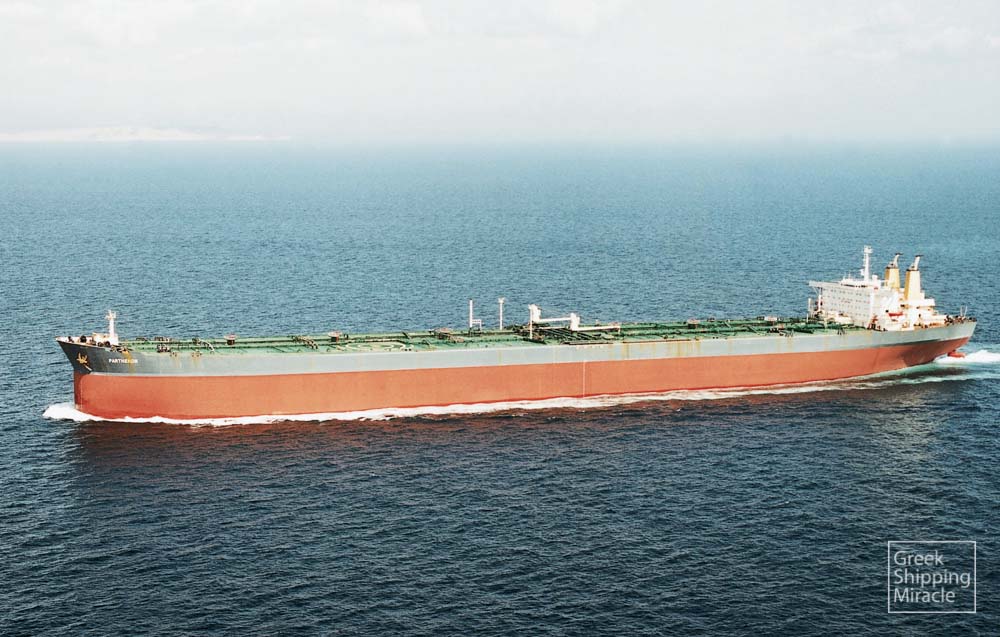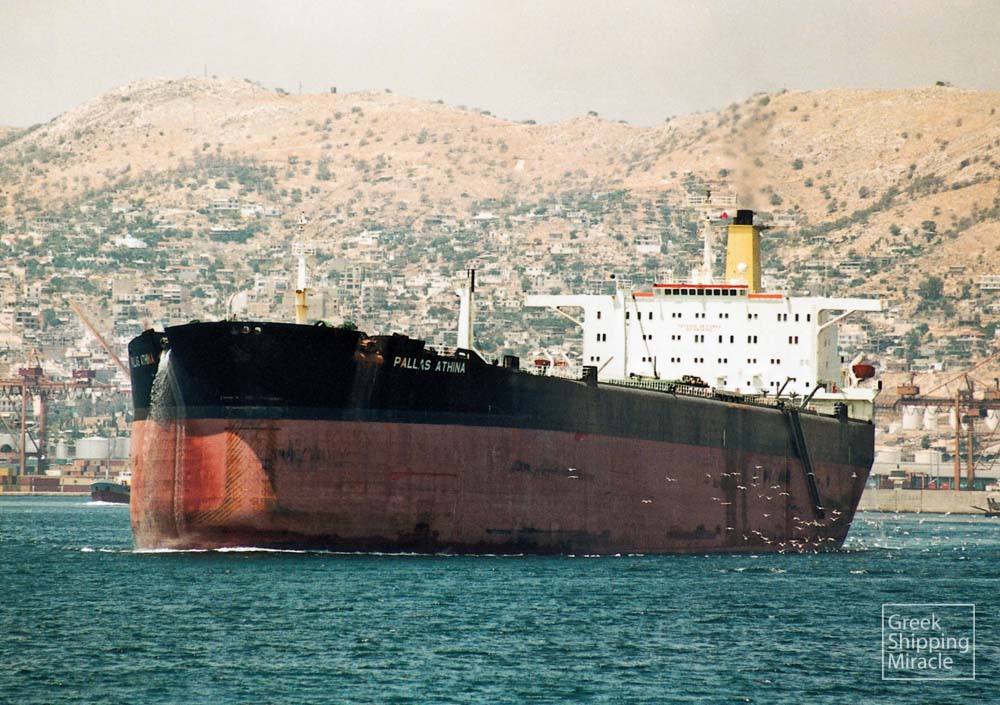JOHN S. LATSIS
His family’s financial difficulties forced him to work from an early age. He demonstrated a keen interest in training and, after completing his school studies in 1923, he went on to study at the Commercial High School of Pyrgos, where he graduated in 1927.
In October 1930, he joined the Greek Navy, serving until late 1931. He then became a commercial and shipping agent in his hometown, establishing John S. Latsis Steamship Agent & Chartering Broker Commercial Representative & Maritime Insurance. The experience he gained from the operation of his business was instrumental to his later career in shipping. Opting to diversify, he soon also entered the tourism and raisin trading sectors, which flourished at that time in the Peloponnese.
Shortly after the outbreak of World War II – on 6 January 1940 – Latsis married Erietta Tsoukalas in Pyrgos. The couple remained together until his passing, in 2003, and had three children: Spyros, Marianna, and Margarita. In May 1940, he was enlisted as a reservist in the Royal Navy and was discharged in May 1941, after Greece was invaded and occupied by the Germans.
After the Liberation of Greece in 1944 and while the country was plagued by a devastating civil war, John Latsis embarked on a seafaring career, working on board ships owned by Evangelos Nomikos, with whom he developed close ties that resulted in his getting involved with coastal passenger shipping. In September 1949, with a loan granted by Nomikos, he acquired the latter’s small steamer EFFIE, which was already employed in Saronic Gulf routes. The venture proving successful, he soon acquired a second vessel serving the same routes, the NIKI. Shortly before the end of that year, his company, Tourist Coastal Passenger Shipping of Greece, acquired the 1939-built, diesel-engined LAURANA from Malta Steamship Company Ltd. The ship was placed in the Saronic Gulf route service under her new name, NERAIDA – in honour of the birthplace of the Greek statesman Nikolaos Plastiras, with whom Latsis entertained friendly ties. The ship became a symbol of Greek coastal passenger shipping, linking Piraeus with the Saronic islands for more than two decades before being laid up in 1974. Unlike the typical fate of a ship, the NERAIDA was never sold for scrap, and in 2007 the Latsis Foundation commissioned its restoration and conversion into a floating museum.
John Latsis’s activity in coastal passenger shipping and his contribution to the economy of the Saronic islands, especially after the acquisition of the NERAIDA, turned him into an important player in that sector. His goals were clearly ambitious. Unlike other shipowners, who were based in Piraeus, he set up offices near Syntagma Square, in central Athens, where many travel agencies were based. In 1952, he acquired two pioneering, newly-built, high-speed passenger ships from the Swedish shipyard Gustafsson & Anderssons Varv., which were named ERIETTA and SPYROS. On 27 May 1952, he participated in a tender for the sale of the new passenger ship KANARIS, built in Italy on behalf of the Greek government as part of Italy’s war reparations to Greece; he intended to place the vessel on the Cyclades and Dodecanese routes. Nevertheless, the acquisition of the KANARIS and certain other sister vessels did not materialise. Latsis finally entered the Cyclades and Dodecanese markets a few years later, through the acquisition of the British passenger ship WORTHING, in July 1955, which was renamed FRYNI.
In the meantime, in 1954 Latsis had also entered ocean-going cargo shipping through the acquisition of a 1920-built vessel that was renamed MARIANNA. In 1957, he expanded his presence in that sector by acquiring, from fellow Greek shipowner Alexander Tsavliris, two 1924-built sister ships, which were renamed SUEZ and LIBYA, and flew the Greek flag. Both vessels were mainly employed in the eastern Mediterranean.
In 1958, John Latsis made his entry into the tanker sector, in which he was to thrive in following decades. He acquired the 1926-built, 5,551-gt Swedish tanker ISEFORD, which was renamed SPYROS, placed under the Greek flag and mainly employed in carrying molasses between Greece and Egypt. The SPYROS was the first Greek-owned ship classed by the Norwegian classification society Det Norske Veritas. The acquisition of that vessel also signalled the beginning of a close relationship between Latsis and important Egyptian personalities, including President Nasser. These ties evolved into joint ventures between the Latsis Group and Egyptian interests, both in Greece and other countries.
A milestone in Latsis’s career was a development that began in 1959, albeit adversely for him. He acquired from the Royal Mail Lines the ocean liners HIGHLAND BRIGADE and HIGHLAND PRINCESS, built in 1929 and 1930 respectively, establishing Latsis Lines to link Greece and Australia, capitalising on migration to the Antipodes. The venture did not materialise, however, as the Greek government ultimately selected the younger liner PATRIS of the Chandris Group to serve that route. The following year, Latsis sold one of the ships; the other, named MARIANNA, was converted and used mainly to transport Libyan pilgrims to Mecca in Saudi Arabia. This move was key to the group’s subsequent growth. The success of the venture prompted Latsis to acquire more ocean liners in the following years. In 1963–64, he acquired from P&O the STRATHMORE and the STRATHEDEN, which were renamed MARIANNA LATSI and HENRIETTA LATSI, respectively. Around that time, he also acquired from the Dutch government the WATERMAN and GROOTE BEER, which had been converted from Victory-type cargo vessels to passenger ships, and after purchase were renamed MARGARITA and MARIANNA IV. With a five-strong fleet, which was expanded in 1965, with the acquisition of the American ocean liner PRESIDENT MONROE – renamed MARIANNA V – Latsis dominated the pilgrim maritime transport market, offering passengers unprecedented comforts. That year alone, his ships carried more than 20,000 pilgrims from Indonesia, the Philippines, Senegal, Morocco, Algeria, and Libya to Mecca. This activity boosted the group’s performance while cultivating strong ties with the Saudis, which proved to be key to Latsis’s later success.
Meanwhile, after selling the cargo ships he had acquired early on, in the early 1960s John Latsis made his final investment on the Saronic Gulf lines, with the acquisition of the speedboat EXPRESS, which remained in his fleet until 1969. Previously, he had agreed with the Greek National Tourism Organisation the acquisition of three newly-built passenger ships, the AFRODITI, the ADONIS, and the EROS, which were built in Italy on behalf of the Greek state. Even though the former was launched in 1964, sponsored by Latsis’s daughter, Marianna, the deal fell through due to a ruling by the Greek Council of State that granted a competitor’s request to cancel the deal. One of the arguments was that Latsis planned to employ the ships on routes outside Greece, whereas the Greek National Tourism Organisation intended to deploy them on the country’s coastal routes. After successive auctions, the ships were sold to other Greek shipowners and eventually operated as cruise ships. Latsis withdrew from coastal passenger shipping – the only exception being the NERAIDA, which continued its voyages to and from the Saronic islands. This experience proved a blessing in disguise, as Latsis was the only Greek shipowner active in post-war coastal passenger shipping whose business survived in the latter half of the 20th century.
The 1960s marked the beginning of growth for the sector with which John Latsis became identified – tankers. Benefiting from the rapid decline in vessel values following a major crisis in the late 1950s, in 1961–1964 he acquired five tankers built between 1943–1952. Further to that, the fall in newbuilding prices gave him in early 1963 the opportunity to place orders for the construction of two tankers in a major Japanese shipyard – Ishikawajima-Harima Heavy Industries. The first vessel delivered, the 58,368-dwt PRINCESS IRENE, raised the Greek flag and joined the Latsis fleet in February 1964. The second, the 77,657-dwt HENRIETTA LATSI, was delivered in October 1966; it, too, was placed under the Greek flag. The order for the construction of the two ships cemented a special relationship between Latsis and the Japanese shipyard, leading to an agreement in September 1966 to establish, in cooperation with IHI, a repair facility at Pylos in the Peloponnese. However, this landmark project, which, according to Latsis, would benefit not only Greek shipping but also the country’s economy at a time when the installation of a substantial number of shipping companies in Greece had already begun, was not implemented due to political instability, which discouraged foreign investment. Nevertheless, in his efforts to support his home country and fellow citizens, John Latsis established in 1967 the Latsis Foundation, which has since carried out significant public-benefit and cultural work.
Latsis’s close ties with the Arab world and his ability to form partnerships across the spectrum led to an ever-growing presence in oil transportation, which experienced a major boost accompanied by structural changes after the Arab-Israeli War of 1967. Building up his tanker fleet through the acquisition of additional tonnage, Latsis managed to combine shipping with commercial initiatives in that field. In 1969, having by then obtained a long experience in the oil business, as well as useful international contacts, he set up Petrola Hellas refinery in Eleusis, which was inaugurated in April 1973. From that time on, his presence on the international energy map expanded significantly and was further strengthened with the acquisition of a large number of tankers, mainly owned by oil majors. Almost all these ships were named with the prefix PETROLA followed by a number. In addition to the refinery, in 1977 Latsis established a repair facility in the same area by taking over a small unit and expanding it into a new repair facility – Hephaestos Hellas Shipyards. This unit served the repair and maintenance requirements of the group’s vessels until 1984, when it ceased operations.
Many of Latsis’s entrepreneurial initiatives developed outside Greece, especially in Saudi Arabia. Using as his basis Petrola Engineering International, established in 1974 with the mission to “study the design and implementation of technical projects outside the boundaries of the Greek state”, the entrepreneur leveraged his group’s know-how, acquired in developing Petrola’s facilities in Eleusis. In the same year, after a meeting with Saudi king Faisal in Jeddah, Latsis inaugurated operations in the oil-producing country by implementing a large-scale construction project. Moreover, in early 1975, the Latsis Group technical division participated in the dredging of the Suez Canal, which had been closed since the Six-Day War in 1967, during which Latsis had placed his entire fleet at the disposal of the Egyptian authorities.
The Latsis Group’s penetration into the Arab world gained great momentum, while its founder mobilised his fleet and best employees to eliminate competition from other major construction companies. The group acquired three ocean liners to be utilised as floating accommodation for a large number of engineers involved in the major construction projects that Petrola Engineering International undertook in Saudi Arabia between 1976 and 1985. These vessels were named MARIANNA VI, MARGARITA L, and MARIANNA IX. In 1986, the latter was made available for a two-year period to accommodate Kalamata earthquake victims, whose food expenses were also covered by Latsis.
The worst post-war crisis in shipping, which broke out in the 1980s, did not affect the performance of the Latsis Group, which even made a move into a new sector by acquiring a controlling stake at the Banque de Depots, a small Swiss bank owned by the Onassis Group. This acquisition marked the group’s entry into banking, which continued with the establishment of Private Bank and Trust Company in 1989 in London and Euromerchant Bank in 1990 in Greece. In 1997, following the acquisition of Interbank, Euromerchant made its entry into the housing and consumer credit markets and was renamed EFG Eurobank, which then acquired the branch network of Crédit Lyonnais Grèce, as well as the Bank of Athens and the Bank of Crete. In 1999, EFG Eurobank entered the Athens Stock Exchange (ASE), with a public offering that attracted the largest number of shareholders in the history of the ASE. That year, 50.1% of Ergasias Bank was acquired and merged with EFG Eurobank, forming the EFG Eurobank Ergasias Group in 2000.
The Latsis Group’s fleet performance during the 1980s crisis under the management of Bilinder Marine Corporation continued unabated: It grew into the second-largest Greek-owned fleet, with a capacity of 3.8 million tons. At that time, a significant number of large tankers joined the fleet, including the second-largest ship in the world, which was renamed HELLAS FOS. The gigantic 555,000-dwt vessel raised the Greek flag in 1986 during a ceremony attended by Greek prime minister Andreas Papandreou and opposition leader Konstantinos Mitsotakis. Around that time, Latsis donated $10 million to the Greek Seamen’s Pension Fund (NAT).
Among John Latsis’s most notable accomplishments are his investments in real estate. Since his early career, he housed his offices in prime locations in Athens. For many years, his headquarters were located at Syntagma Square, later moving to Pallas Athena – a former hotel in the affluent Athenian suburb of Kifissia. However, Latsis is probably best-known in real estate circles for the acquisition of one of London’s most historic buildings, Bridgewater House, which hosted, among other events, the first NATO summit since the end of the Cold War, in July 1990.
John S. Latsis passed away on 17 April 2003, having managed to reach far beyond Greece’s borders, excelling in almost everything he turned his hand to. ‘Captain Yannis’, as he was widely known in his home country, was successful, in his own, unconventional way, in building bridges with the world’s elite, becoming a true ambassador of his country and its traditions. Overcoming many challenges, even in public-benefit projects, Latsis associated his name with initiatives that have had a beneficial impact on the many, effectively serving the interests of his country.
“Wealth is misery when it doesn’t find the right purpose”. This motto, one of Latsis’s favourite, published in a 1994 book, is echoed in the work carried out by his descendants and the foundation that bears his name.
